|
View previous topic :: View next topic
|
|
| Author |
Message |
AfterHours
Gender: Male
Location: The Zone
- #101
- Posted: 05/26/2022 19:02
- Post subject:
|
Hieronymus Bosch (circa 1450 - 1516)
Best Works:
5.0/10: Crucifixion With a Donor (circa 1480 - 1485) [Painting]
5.9/10: St. Jerome at Prayer (circa 1482) [Painting]
5.2/10: Saint John the Evangelist at Patmos (circa 1489) [Painting]
6.0/10: Saint John the Baptist (circa 1490 - 1495) [Painting]
6.3/10: Hermit Saints Triptych (circa 1493) [Painting]
7.1/10: Triptych of the Adoration of the Magi (circa 1494) [Painting]
6.0/10: Christ Carrying the Cross (circa 1495) [Painting]
5.9/10: Crucifixion of Saint Wilgefortis Triptych (circa 1497) [Painting]
5.5/10: Christ Carrying the Cross (circa 1498) [Painting]
8.1/10: The Last Judgment (after 1482; probably circa 1500) [Painting]
7.1/10: The Last Judgment (after 1486; probably circa 1500) [Painting]
7.4/10: The Temptation of St. Anthony (circa 1501) [Painting]
9.1/10: The Garden of Earthly Delights (probably circa 1503 - 1505) [Painting]
7.0/10: The Seven Deadly Sins and the Four Last Things (probably circa 1505 - 1510; Attribution disputed) [Painting]
6.2/10: Visions of the Hereafter Polyptych - Hieronymus Bosch (circa 1505 - 1515) [Painting]
7.1/10: The Haywain Triptych (circa 1516) [Painting]
Crucifixion With a Donor - Hieronymus Bosch (circa 1480 - 1485) / Royal Museums of Fine Arts of Belgium, Brussels, Belgium [Painting]

Thumbnail. Click to enlarge.
FULL VIEW - HIGHEST QUALITY - ZOOM FUNCTION: http://boschproject.org/view.html?pointer=0.475,0.000&i=19MCPVIS
St. Jerome at Prayer - Hieronymus Bosch (circa 1482) / Museum of Fine Arts, Ghent, Belgium [Painting]

Thumbnail. Click to enlarge.
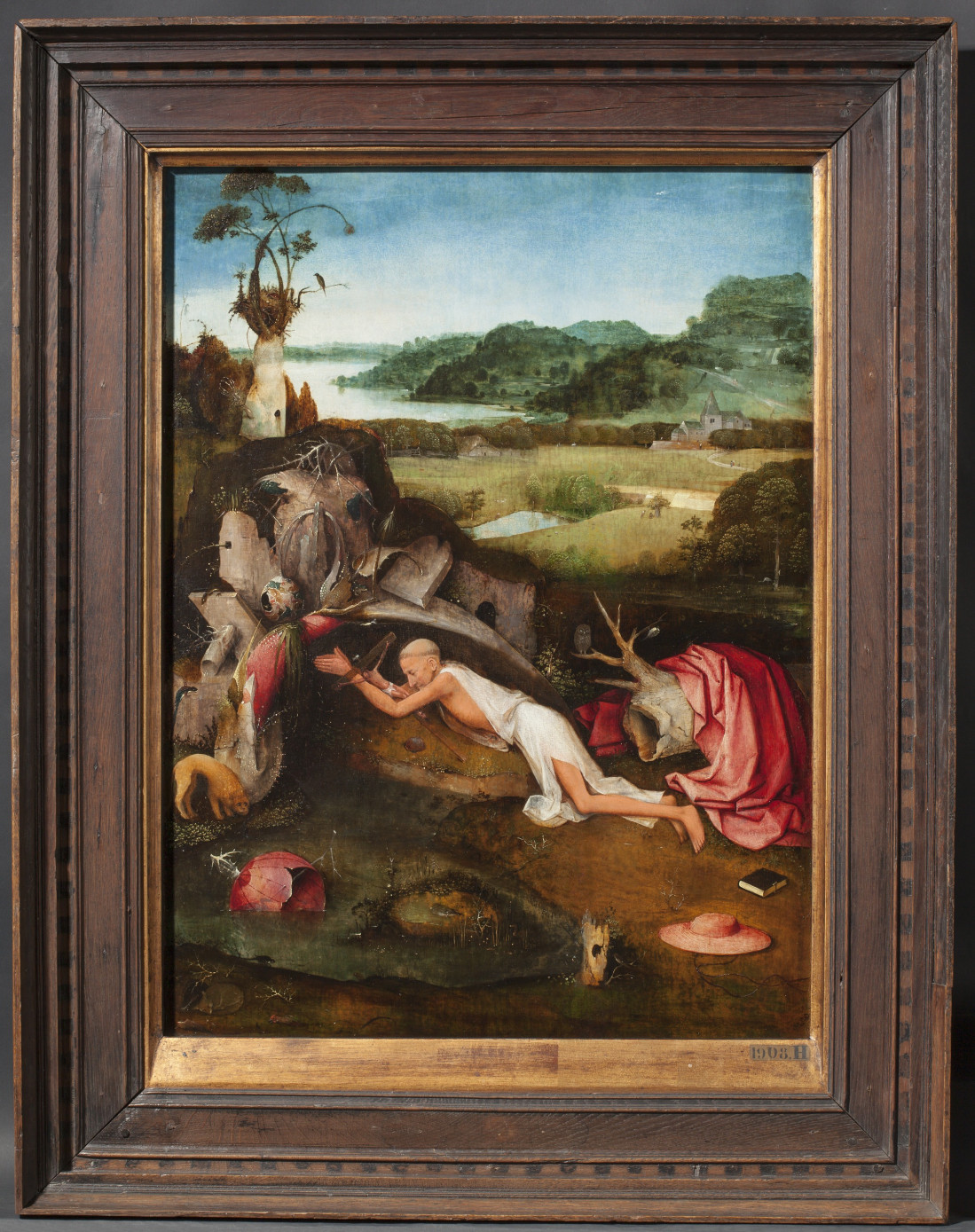
Thumbnail. Click to enlarge.
FULL VIEW - HIGHEST QUALITY - ZOOM FUNCTION: http://boschproject.org/view.html?pointer=0.428,0.000&i=02MCPVIS-after
Saint John the Evangelist at Patmos (circa 1489) [Painting] [This was probably originally part of an Altarpiece triptych though the rest is considered lost]

Thumbnail. Click to enlarge.
External Panel - Passion Scenes:

Thumbnail. Click to enlarge.
FULL VIEW - HIGHEST QUALITY - ZOOM FUNCTION: http://boschproject.org/view.html?pointer=0.312,0.001&i=52MCPVIS
FULL VIEW - EXTERNAL PANEL "Passion Scenes" - HIGHEST QUALITY - ZOOM FUNCTION: http://boschproject.org/view.html?pointer=0.392,0.003&i=51MCPVIS
Saint John the Baptist - Hieronymus Bosch (circa 1490 - 1495) / Museo Lázaro Galdiano, Madrid, Spain [Painting]

Thumbnail. Click to enlarge.
FULL VIEW - HIGHEST QUALITY - ZOOM FUNCTION: http://boschproject.org/view.html?pointer=0.481,0.000&i=47MCPVIS
Hermit Saints Triptych - Hieronymus Bosch (circa 1493) / Gallerie dell'Accademia, Venice, Italy [Painting]

Thumbnail. Click to enlarge.
FULL VIEW - HIGHEST QUALITY - ZOOM FUNCTION: http://boschproject.org/view.html?pointer=0.431,0.007&i=29_30_31_MCPVIS-during
Triptych of the Adoration of the Magi - Hieronymus Bosch (circa 1494) / Museo del Prado, Madrid, Spain [Painting]

Thumbnail. Click to enlarge.
FULL VIEW - VERY HQ - ZOOM FUNCTION: https://www.museodelprado.es/en/the-col...d84b9377f7
FULL VIEW - HIGHEST QUALITY - ZOOM FUNCTION: http://boschproject.org/view.html?i=136_137_138_MCPVIS
FULL VIEW - EXTERNAL PANELS - VERY HQ - ZOOM FUNCTION: https://www.museodelprado.es/en/the-col...t%20stage.
FULL VIEW - EXTERNAL PANELS - HIGHEST QUALITY - ZOOM FUNCTION: http://boschproject.org/view.html?pointer=0.469,0.004&i=134_135_MCPVIS
Christ Carrying the Cross - Hieronymus Bosch (circa 1495) [Originally, the left wing of a lost triptych] / Kunsthistorisches Museum, Vienna, Austria [Painting]

Thumbnail. Click to enlarge.
FULL VIEW - HIGHEST QUALITY - ZOOM FUNCTION: http://boschproject.org/view.html?pointer=0.396,0.027&i=10MCPVIS
FULL VIEW - EXTERNAL - LEFT WING (lost triptych) - HIGHEST QUALITY - ZOOM FUNCTION: http://boschproject.org/view.html?pointer=0.415,0.003&i=09MCPVIS
Crucifixion of Saint Wilgefortis Triptych - Hieronymus Bosch (circa 1497) / Gallerie dell'Accademia, Venice, Italy [Painting]

Thumbnail. Click to enlarge.
FULL VIEW - HIGHEST QUALITY - ZOOM FUNCTION: http://boschproject.org/view.html?pointer=0.349,0.000&i=23_24_25_MCPVIS-after
Christ Carrying the Cross - Hieronymous Bosch (circa 1498) / Monastery of El Escorial, San Lorenzo de El Escorial, Spain [Painting]
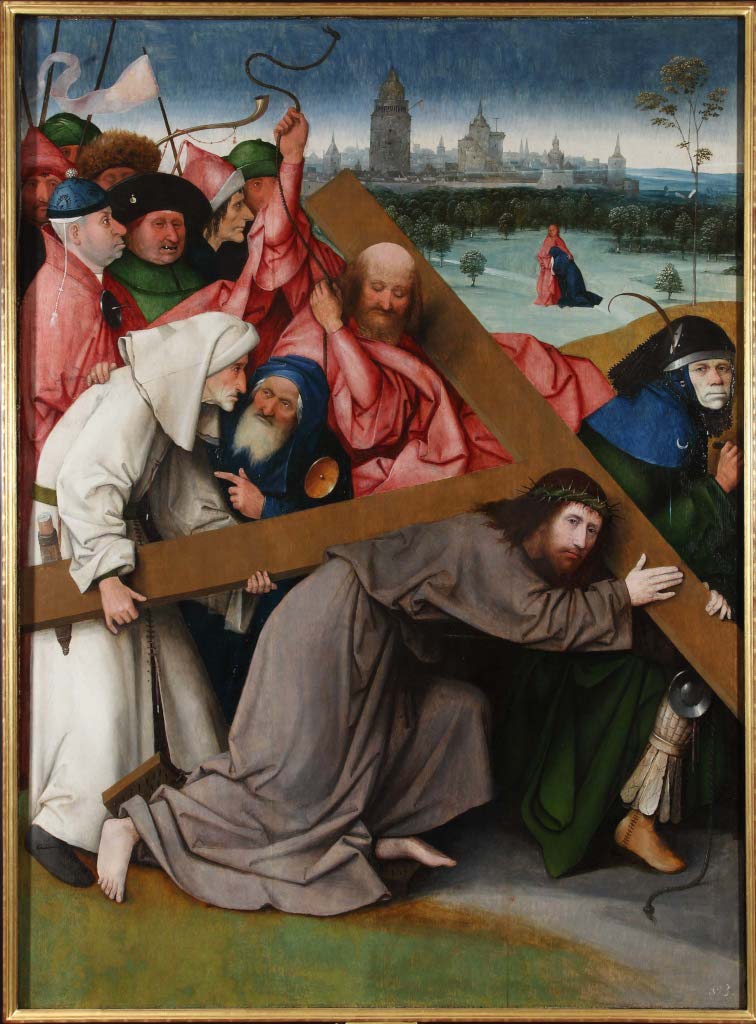
Thumbnail. Click to enlarge.
FULL VIEW - HIGHEST QUALITY - ZOOM FUNCTION: http://boschproject.org/view.html?pointer=0.461,0.007&i=89MCPVIS
The Last Judgment - Hieronymus Bosch (after 1482; probably circa 1500) / Academy of Fine Arts, Vienna, Austria [Painting]

Thumbnail. Click to enlarge.
FULL VIEW - VERY LARGE - HIGHEST QUALITY - ZOOM FUNCTION (Hold shift and use up/down arrow keys to zoom in/out): http://www.jheronimusbosch.org/views/view.html?161-163MCPVIS&Zichtbaar%20licht
CENTRAL PANEL - VERY LARGE - HIGHEST QUALITY - ZOOM FUNCTION (Hold shift and left click to zoom in/out): http://boschproject.org/view.html?pointer=0.436,0.005&i=816MCPVIS_EX
VARIOUS DETAILS - CENTRAL PANEL - HIGHEST QUALITY: http://boschproject.org/#/artworks/The_Last_Judgment_ABK_interior_central
IMAGE - Academy of Fine Arts, Vienna, Austria: https://live.staticflickr.com/8744/16813330851_9fac993112_b.jpg
The Last Judgment - Hieronymous Bosch (after 1486; probably circa 1500) / Groeningemuseum, Bruges, Belgium [Painting]

Thumbnail. Click to enlarge.
FULL VIEW - VERY HQ - ZOOM FUNCTION: https://www.museabrugge.be/en/collection/work/id/0000_gro0208_i
FULL VIEW - VERY LARGE: https://upload.wikimedia.org/wikipedia/commons/f/fe/Bosch_laatste_oordeel_drieluik.jpg
FULL VIEW - HIGHEST QUALITY - ZOOM FUNCTION: http://boschproject.org/view.html?pointer=0.423,0.001&i=71_72_73_MCPVIS
FULL VIEW - EXTERIOR PANEL - HIGHEST QUALITY - ZOOM FUNCTION: http://boschproject.org/view.html?pointer=0.437,0.000&i=69_70_MCPVIS
SEVERAL DETAILS - HIGHEST QUALITY - ZOOM FUNCTION: http://boschproject.org/#/artworks/The_Last_Judgment_Groeningemuseum
The Temptation of St. Anthony - Hieronymus Bosch (circa 1501) / Museu Nacional de Arte Antiga, Lisbon, Portugal [Painting]

Thumbnail. Click to enlarge.
FULL VIEW - LARGE: https://upload.wikimedia.org/wikipedia/...-21-31.jpg
FULL VIEW - ZOOM FUNCTION: https://artsandculture.google.com/asset...ytuw?hl=en
FULL VIEW - HIGHEST QUALITY - ZOOM FUNCTION: http://boschproject.org/view.html?point..._15_MCPVIS
FULL VIEW - EXTERIOR - HIGHEST QUALITY - ZOOM FUNCTION: http://boschproject.org/view.html?pointer=0.531,0.000&i=11_12_MCPVIS
The Garden of Earthly Delights - Hieronymus Bosch (probably circa 1503-1505) / Museo del Prado, Madrid, Spain [Painting]

Thumbnail. Click to enlarge.
FULL VIEW - VERY LARGE: http://uploads6.wikiart.org/images/hieronymus-bosch/the-garden-of-earthly-delights-1515-7.jpg
FULL VIEW - VERY LARGE - HIGHEST QUALITY - ZOOM FUNCTION: http://boschproject.org/view.html?pointer=0.348,0.010&i=00MCPVIS
SEVERAL DETAILS - HIGHEST QUALITY: http://boschproject.org/#/artworks/The_Garden_of_Earthly_Delights
IMAGE FOR SCALE - PRADO MUSEUM: https://www.ncronline.org/sites/default...k=5dMRcam3
IMAGE FOR SCALE - PRADO MUSEUM: https://www.fr.de/bilder/2016/01/14/603...3-406b.jpg
The Seven Deadly Sins and the Four Last Things - Hieronymous Bosch; Attribution disputed (probably circa 1505 - 1510) / Museo del Prado, Madrid, Spain [Painting]
Note: Attribution of this work has long been disputed. Unless definitively proven otherwise I will contend that it is indeed a Bosch original or more probably Bosch and his workshop due to the fact that the execution and composition is far too idiomatically original to have likely been someone else of the period. Further note: in October 2015, the Bosch Research and Conservation Project declared the work was from a follower of Bosch or Bosch's workshop, though the Museo Del Prado, with their own historians and analysis, disputes this and maintains it is a Bosch original. Again, due to its originality I think it is very likely that it was at least Bosch's ideas and composition if even it may have been thereafter painted by or mostly by his workshop -- regardless, probably under his direction (my and others' assertion unless definitively proven otherwise).
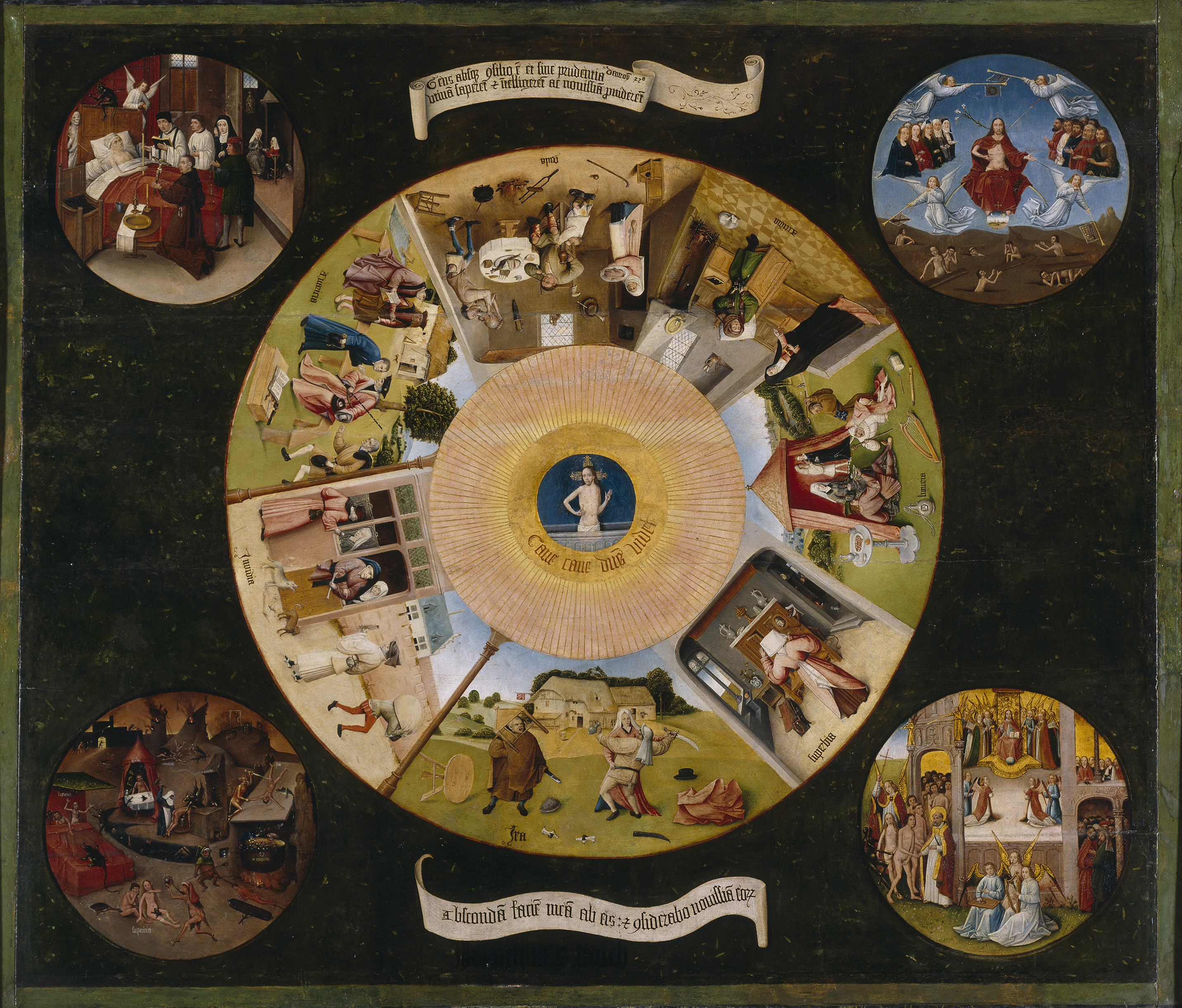
Thumbnail. Click to enlarge.
FULL VIEW - VERY HQ - ZOOM FUNCTION: https://www.museodelprado.es/en/the-col...34b8873b70
DETAIL - HELL - SEVEN DEADLY SINS REPEATED ENDLESSLY: https://images.saymedia-content.com/.im...hings.webp
Visions of the Hereafter Polyptych - Hieronymus Bosch (circa 1505 - 1515) / Museo di Palazzo Grimani, Venice, Italy [Painting]

Thumbnail. Click to enlarge.
FULL VIEW - HIGHEST QUALITY - ZOOM FUNCTION: http://boschproject.org/view.html?pointer=0.405,0.007&i=32_34_36_38_MCPVIS
The Haywain Triptych - Hieronymus Bosch (circa 1516) / Museo del Prado, Madrid, Spain [Painting]
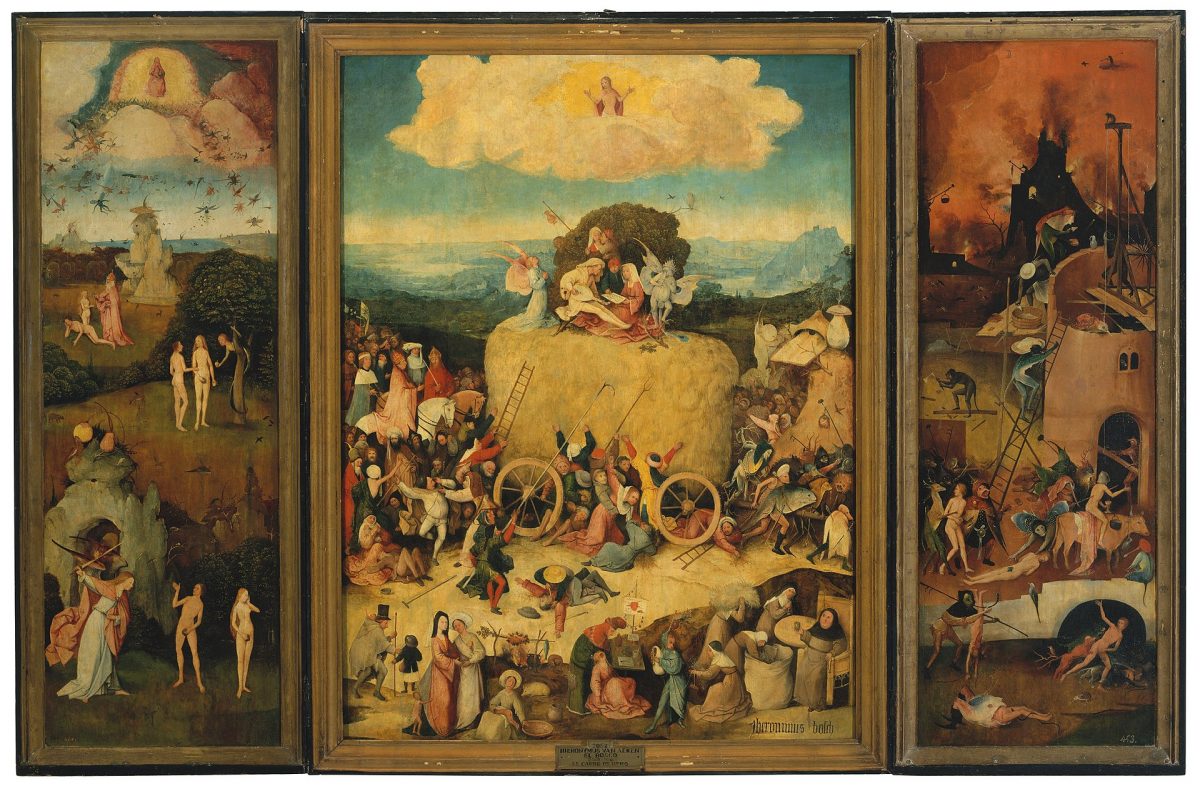
Thumbnail. Click to enlarge.
FULL VIEW - MAIN (OPEN) TRIPTYCH - LARGE - HIGHEST QUALITY - ZOOM FUNCTION: https://www.museodelprado.es/en/the-col...242b36c3ce
FULL VIEW - MAIN (OPEN) TRIPTYCH - LARGEST IMAGE - HIGHEST RESOLUTION AND QUALITY - ZOOM FUNCTION: http://boschproject.org/view.html?point...101_MCPVIS
FULL VIEW - EXTERNAL (CLOSED) PANELS - LARGEST IMAGE - HIGHEST RESOLUTION AND QUALITY - ZOOM FUNCTION: http://boschproject.org/view.html?pointer=0.469,0.022&i=97_98_MCPVIS
ASSORTED DETAILS - LARGEST IMAGE - HIGHEST RESOLUTION AND QUALITY - ZOOM FUNCTION: http://boschproject.org/#/artworks/The_Haywain_Prado
_________________
Best Classical
Best Films
Best Paintings
Last edited by AfterHours on 06/24/2025 14:13; edited 22 times in total
|
|
|
|
AfterHours
Gender: Male
Location: The Zone
- #102
- Posted: 05/26/2022 19:11
- Post subject:
|
Werner Tubke (1929 - 2004)
Best Works:
7.1/10: The Reminiscences of Judge Schulze, Part II (1965) [Painting]
6.9/10: The Reminiscences of Judge Schulze, Part III (1965) [Painting]
7.1/10: The Reminiscences of Judge Schulze, Part VII (1966 - 1967) [Painting]
8.9/10: Early Bourgeois Revolution in Germany (1976 - 1987) [aka, "Peasants' War Panorama"] [Painting]
The Reminiscences of Judge Schulze (Parts II, III, & VII) - Werner Tubke (1967)
NOTE: The following 3 parts may or may not constitute the complete work. I have not found Parts I, IV, V & VI and do not know if they exist or if they have ever existed. Did Tubke ever complete them? Therefore, it is not at all certain that I am even accurate in representing this selection, its three (or more?) pieces, as a single or combined work. They may in fact be separate, to be separately considered and rated on their own. So consider my rating and ranking very much an estimate at this time, until further information, study and evaluation is possible.
UPDATED NOTE, 2025: According to an article I found, 5 parts of the cycle survive: parts 1, 2, 3, 5, 7
PART II:

Thumbnail. Click to enlarge.
PART III:

Thumbnail. Click to enlarge.
Memories of Dr. Jur. Schulze , Part VII (1966 - 1967):

Thumbnail. Click to enlarge.
PART II - FULL VIEW - ZOOM FUNCTION, DETAILS, EXPLANATION: https://geheimnis-der-bilder.zdf.de/kun...hulze.html
PART III - DETAIL: http://4.bp.blogspot.com/-U7x8RA_hDVY/U...ze+III.JPG
PART VII - DETAIL: http://yourartshop-noldenh.com/wp-content/uploads/2010/06/05-May.-17.jpg
PART VII - DETAIL: http://www.blindbild.com/wp-content/uploads/2014/10/leipzig-museum-tuebke1.jpg
PART VII - DETAIL: http://www.blindbild.com/wp-content/uploads/2014/10/leipzig-museum-tuebke2.jpg
PART III & PART VII - MUSEUM DE FUNDATIE, NETHERLANDS: https://duitslandinstituut.nl/assets/upload/artikel/Achtergrond/Tuebke_fundatie_.jpg
WERNER TUBKE - VIDEO - EXHIBITION: https://www.youtube.com/watch?v=MS9r6yv-lkA
VIDEO - Note: the following video excerpt gives some closer views of Part III and also says that there are 12 parts to the series, completed between 1965 and 1967: https://www.films.com/ecTitleDetail.aspx?TitleID=64112
PART V???: https://www.akg-images.co.uk/archive/Lebenserinnerungen-des-Dr.-jur.-Schulze-V-2UMDHURHK2JF.html
IMAGE PART V???: https://www.akg-images.co.uk/Docs/AKG/Media/TR5/d/e/6/f/AKG298877.jpg
STUDIES - JUDGE SCHULZE: https://www.mutualart.com/Artwork/Studie-zu--Lebenserinnerungen-des-Dr--ju/19F0D7022424246D
https://www.flickr.com/photos/thetaipanofhongkong/44734706545/
https://www.flickr.com/photos/sheepdog_rex/29732909664/
https://www.flickr.com/photos/sheepdog_rex/29732910264/
https://www.flickr.com/photos/sheepdog_rex/29732911064/in/photostream/
Early Bourgeois Revolution in Germany - Werner Tubke (1976 - 1987) [aka, "Peasants' War Panorama"] / Bad Frankenhausen, Thuringia, Germany

Thumbnail. Click to enlarge.
VIRTUAL TOUR - PANORAMIC FULL VIEW: https://www.panorama-museum.de/de/bildsaaltour.html
FULL VIEW - 360 DEGREE TOUR: https://www.mdr.de/reformation500/pano_badfrankenhausen-refjahr-100.html
FULL VIEW - 360 DEGREE PHOTOS: https://www.360grad-fotos.de/files/maniax/rundgang/tvsk/tvsk.html?s=pano13712
IMAGE FOR SCALE - PANORAMA MUSEUM: https://www.kulturelle-gedaechtnisorte....e27519.jpg
IMAGE FOR SCALE - PANORAMA MUSEUM: https://www.kulturelle-gedaechtnisorte....6fccb8.jpg
GENERAL DESCRIPTION:
Contrary to the intentions of his clients, Tübke created the depiction of an entire era, the Renaissance , which is often described in literature as “theatrum mundi” (world theater). He by no means limited himself to a snapshot that can be precisely determined in time or place, let alone a faithful reproduction of real historical events or the emphasis placed on individual aspects. In addition to the historical figures who also appear, such as Müntzer and Luther, the painter visualized a multitude of allegorical allusions to events (including those of other eras), but above all to fundamental human fears, to superstition , apocalyptic ideas and biblical themes in his powerfully suggestive imagery. He also borrowed heavily from contemporary paintings and woodcuts. In addition, he immortalized himself in several places as a person plagued by self-doubt in the face of the almost superhuman task, thus documenting the creation process of his work.
The center of the image—the section reproduced in most images of the painting—is the panorama of the Battle of Frankenhausen itself, with Thomas Müntzer at its center. While the fighting still rages around him, Müntzer is already lowering the flag of the Bundschuh movement —he knows his cause is lost. Death is already approaching him with his bagpipes. Thus, Müntzer is not the shining hero here, but a tired, broken man.
Separated from the battle scene by a hedge, Tübke has grouped important personalities of the time around a fountain in the same part of the picture, including Albrecht Dürer and Martin Luther .
Tübke cited Albrecht Dürer and Lucas Cranach the Elder as his artistic role models, combining his own techniques with unmistakable influences from the Old Masters and (especially for this monumental work) from contemporary representational styles. Over several years of preparation, he intensively studied sources to familiarize himself with the conceptual world and artistic representation of this era between the late Middle Ages and the early modern period.
Although there are larger rotundas , Tübke's work is considered unique. It is not a pictorial, documentary snapshot in the manner of a typical "battle painting," but rather, as a metaphorical, panorama-like representation, it can be considered a prototype of its own genre.
There are two different interpretations of the painting today. One assumes that Tübke created an allegory for the doomed GDR through his depiction. Just as Thomas Müntzer must admit that his vision of a better future for the simple rural population has failed, so too has the GDR leadership's vision of a socialist state in which man is the measure of all things. Eduard Beaucamp , art critic for the Frankfurter Allgemeine Zeitung and one of Tübke's early supporters in the West, judged:
"The Thuringian Peasants' War Panorama (1976 to 1987) is not a didactic large-scale illustration, but a historical parable of human trials and tribulations with a view of the social unrest, upheavals, and religious struggles of modernity, of a world not in awakening, but in the turmoil of a late period: world history unfolds as a world judgment."
"All of these commissioned paintings are based on a deep disagreement with the ideological program of the GDR party. The projects could be disguised and justified with the "heritage" debate. In almost all of his "history paintings," Tübke has developed his skeptical, even historically pessimistic view rather than the GDR's ideal of progress—the concept of a return of the same, which is never the same." (FAZ, May 28, 2004)
The second interpretive hypothesis assumes a general transience of all existence—a perspective underscored by the painting's panorama character. This perspective is not limited to the failure of the peasant uprisings under Thomas Müntzer—the historical parallel cited in the GDR—but generally to all social processes at this and other times. Everything is lost not only for Müntzer and his peasant armies, but also for the nobility, the church, and the bourgeoisie. Gerd Lindner, director of the Panorama Museum , interpreted the painting in 2004 as follows:
"I believe the work is timeless because the painter has developed a view of history that is very subjective. In a nutshell, one could say that he shows the eternal recurrence of the same, the basic social problems remain the same; that is the basic message of the picture, presented in a total form, i.e., in a circular form without beginning or end, so that history appears as a continuum, without linear progression, which was in blatant contradiction to the official historical view of the GDR."
Christina Tilmann said after Werner Tübke’s death:
"It is a carnival , a masked festival, but also always a deeply pessimistic dance of death on the ruins of civilization, which Werner Tübke stages. Full of admiration for the mastery of the ancestors, but at the same time permeated by the melancholic awareness that this flowering of civilization is long gone, replaced by a more barbaric era." (Wiki)
_________________
Best Classical
Best Films
Best Paintings
Last edited by AfterHours on 06/10/2025 15:43; edited 8 times in total
|
|
|
|
AfterHours
Gender: Male
Location: The Zone
- #103
- Posted: 05/26/2022 19:27
- Post subject:
|
Gustav Klimt (1862 - 1918)
Best Works:
7.7/10: Philosophy, Medicine & Jurisprudence (1901) [University of Vienna Ceiling Paintings; Destroyed in 1945]
8.3/10: The Beethoven Frieze (1902)
7.5/10: Portrait of Adele Bloch-Bauer I (1907)
7.9/10: The Kiss (1908)
7.0/10: The Stoclet Frieze (1911)
7.8/10: The Virgin (1913)
Philosophy, Medicine & Jurisprudence - Gustav Klimt (1901) [University of Vienna Ceiling Paintings; Destroyed in 1945]
NOTE: As these were destroyed and are only available in black and white photographs, it is impossible to give a truly accurate rating of the originals (among the saddest losses in all of art). Therefore, they can only be evaluated based on what we have photographically and through the assistance of reproductions, which essentially distill them to Klimt's extraordinary draughtsmanship, instead of paintings with the added expression of his colors and gold and ornamentation. I personally think the original work was probably his masterpiece, the greatest work of his career, and I will admit that it is difficult to remove oneself from this notion when evaluating and rating them as is. But that is what I've attempted to do, even if, ultimately it is probably not truly able to be done with certainty. Fwiw (though we'll never know for sure) I estimate that this work would rate around 8.5/10 or higher, if we could see the originals in color.

Thumbnail. Click to enlarge.
UNIVERSITY OF VIENNA CEILING: https://medienportal.univie.ac.at/uploads/media/Klimt_Fakultaetsbilder_02.jpg
PHILOSOPHY - FULL VIEW - LARGE: http://upload.wikimedia.org/wikipedia/commons/d/de/Philosophy-final-state-1907.jpg
PHILOSOPHY - FULL VIEW - LEOPOLD MUSEUM - VERY LARGE (Mediocre Quality): https://kendraorcutt.files.wordpress.com/2011/11/dsc_00101.jpg
MEDICINE - FULL VIEW - LARGE: http://upload.wikimedia.org/wikipedia/commons/3/3e/Medicine-final-state-1907.jpg
MEDICINE - FULL VIEW - LEOPOLD MUSEUM - VERY LARGE (Mediocre Quality): https://kendraorcutt.files.wordpress.com/2011/11/dsc_0006.jpg
MEDICINE - FULL VIEW - VERY LARGE: http://finearts.hku.hk/wuploads/sites/5/2013/02/medizin.jpg
JURISPRUDENCE - FULL VIEW - LARGE: http://upload.wikimedia.org/wikipedia/commons/9/9d/Jurisprudence-final-state-1907.jpg
JURISPRUDENCE - FULL VIEW - LEOPOLD MUSEUM - VERY LARGE (Mediocre Quality): https://kendraorcutt.files.wordpress.com/2011/11/dsc_00221.jpg
In 2021, Google Arts and Culture collaborated with art historians, advanced technology and supportive organizations to research and utilize a computerized painting algorithm, to do their best to color the paintings per Klimt's tendencies, specifications and recorded observations of those who saw them before they were destroyed. Their work is commendable and they give one some taste of what they may have looked like and the striking affect (and very shocking for their time) they would have had. Though I expect the colors were quite a bit more distinct, fuller, more solidly painted than what Google has come up with so far, their work is nevertheless appreciated and worth looking over (that also clarifies some figurative separation and details), and may pave the way for a future project that could more vividly and accurately recreate what they looked like. FULL VIEW - GOOGLE ARTS AND CULTURE - COLORIZED RENDITION: https://editorial.designtaxi.com/editor...ings-2.png
VIRTUAL TOUR - GOOGLE ARTS AND CULTURE - VERY HIGH VISUAL QUALITY - COLORIZED RENDITION (plus The Beethoven Frieze and other Klimt works): https://artsandculture.google.com/pocketgallery/kAUxTZBD8McZyQ?pgs=eyJraSI6dHJ1ZX0.
The Beethoven Frieze - Gustav Klimt (1902)

Thumbnail. Click to enlarge.

Thumbnail. Click to enlarge.

Thumbnail. Click to enlarge.

Thumbnail. Click to enlarge.
FULL VIEW - ENTIRE FRIEZE - LARGEST IMAGE - HIGHEST QUALITY AND RESOLUTION - ZOOM FUNCTION: https://artsandculture.google.com/asset/the-beethoven-frieze-gustav-klimt/3AF30E85KM2IwQ?hl=en
VIRTUAL TOUR - GOOGLE ARTS AND CULTURE (plus other Klimt works): https://artsandculture.google.com/pocketgallery/kAUxTZBD8McZyQ?pgs=eyJraSI6dHJ1ZX0.
VIDEO - INSIDE THE VIENNA SECESSION BUILDING - THE BEETHOVEN FRIEZE: https://www.youtube.com/watch?v=Qufo2hApvVA
VIDEO - FULL VIEW - 360 DEGREE VR (Starts approx 1:25; 360 degree function in top left corner of screen): https://www.youtube.com/watch?v=aQ3BGf0Ap0w
IMAGE - SCALE - VIENNA SECESSION MUSEUM: https://www.welt.de/img/newsticker/dpa_...-3-jpg.jpg
Misc Notes / in preparation for analysis...
-Decisive step towards modernism: enhanced independence of form, line, ornamentation
-Form no longer subordinate to content; develops a life of its own with it's own content
-Three Gorgon's, allegories of lack of chastity, purity, temporance
-Strewn with male and female genitalia, spermatoza and ovules, repelling the public/critics
-Grotesque, sickly, emaciated figures
-Ultimately, optimistic, utopian? Ambiguous, double meanings, contradictions
-No real liberation in the unveiled sexuality. "On the contrary, the goal he reaches is a double nightmare: that of the castrating woman, whose sword is no longer the symbolic one of Judith I but her own sex; that of the lechery of woman, whose arousal of pleasure, being self-directed..."
-Figure at end, finds himself perilously situated, naked, without armour. In spite of his athlete's body, he is, as Jean-Paul Bouillon points out, held prisoner by the woman's arms, which embrace him and hold down his head. Nothing remains of the triumphant Theseus of the Secession poster; his stance is that of the helpless old man in Jurisprudence. In him we see the ambivalence of sexuality as punishment and fulfillment.
-It is the return of the hero to the mother's womb, the end of his journey to a womb he should have never left, the last embrace, signifying also a return to the source, to the cosmos in which woman is the true conqueror. This "imprisonment in the womb" is to be found again in Hope I.
-In 1902, Rodin congratulated Klimt on frieze being "so tragic and so divine". Klimt's feelings were mutual.
-Philosphy, medicine, Jurisprudence did not seem to guarantee a happy or fulfilling life for any man. He and fellow utopians saw art, and art alone, as having the power to bring salvation. Secessionists attachment to the total work of art. Klimt had been seeking answer to ultimate questions of human existence, which had been denied in three University paintings by the negative answer that emerged: resignation and melancholy
-Like Wagner's interpretation, "a combat of the soul struggling to attain joy against the pressure of those hostile forces that intervene between ourselves and earthly happiness"
-In the frieze, there are details conducive to The Romance of the Rose, as the allegory of the rose was a theme frequently used during the mediaeval period and which made a surprising comeback during the art of the 19th century (for example, in painting in the works of the Pre-Raphaelites, especially in those of Dante Gabriel Rossetti, in music by Richard Strauss in his opera Der Rosenkavalier, whose libretto was written by the Austrian writer Hugo von Hofmannsthal). Along the time, the chivalric ideal undergoes various changes, the results of which are the fact that the above-mentioned features lose their force, grow increasingly weaker and each time “another layer comes off, which had turned into a lie”. With Klimt, all these alterations take the shape of the nude knight who retains none of the features of the medieval model. The hero of the modern age appears stripped of all the old ideals and revealed in his nudity. It seems a circumstance similar to the one mentioned previously, that of the empty suit of armor, with no knight inside to play the part of the hero (a kind of “Cheshire grin without a Cheshire cat” in Lewis Carroll’s story), only in this case the story is reversed: The knight has no suit of armor and he appears naked
Portrait of Adele Bloch-Bauer I - Gustav Klimt (1907) / Neue Galerie, New York, USA [Painting]

Thumbnail. Click to enlarge.
FULL VIEW - LARGE: http://upload.wikimedia.org/wikipedia/commons/8/84/Gustav_Klimt_046.jpg
FULL VIEW - VERY LARGE: https://upload.wikimedia.org/wikipedia/...907%29.jpg
FULL VIEW - VERY LARGE: https://gallerix.org/album/Klimt/pic/glrx-1383365430
FULL VIEW - ZOOM FUNCTION: https://artsandculture.google.com/asset/adele-bloch-bauer-i-gustav-klimt/8AGgCo0-kGh2aw?hl=en
IMAGE - SCALE: https://i.huffpost.com/gen/2856060/thumbs/o-ADELE-BLOCH-900.jpg?3
The Kiss - Gustav Klimt (1908)

Thumbnail. Click to enlarge.
FULL VIEW - VERY LARGE: https://buxtonfestival.files.wordpress.com/2012/06/intermezzo-cover.jpg
FULL VIEW - LARGEST IMAGE - HIGHEST QUALITY AND RESOLUTION - ZOOM FUNCTION: https://artsandculture.google.com/asset/the-kiss-gustav-klimt/HQGxUutM_F6ZGg
IMAGE FOR SCALE - Belvedere Museum, Vienna, Austria: https://pbs.twimg.com/media/DduHHRbWAAA9n6F?format=jpg&name=small
IMAGE FOR SCALE - Belvedere Museum, Vienna, Austria: https://static01.nyt.com/images/2012/07/25/crosswords/0725klimtjpeg/0725klimtjpeg-blog480.jpg
Notes for future analysis...
Highly original masterpiece of symbology (Klimt is among the most original visual artists of all time)
Highly complex and profound rumination on the divine, on sensuality, beauty, sexuality, conflated with death
Gold leaf and gold sprinkles serenade the painting everywhere giving it a very striking, glowing and divine beauty, referencing much religious art of earlier periods
A complicated resurrection and rumination on the past: "The use of gold leaf recalls medieval gold-ground paintings, illuminated manuscripts, earlier mosaics, and the spiral patterns in the clothes recall Bronze Age art and the decorative tendrils seen in Western art since before classical times. The man's head ends very close to the top of the canvas, a departure from traditional Western canons that reflects the influence of Japanese prints..." (Wikipedia)
The draughtsmanship of Klimt (his sense of line, the way he draws, the way he colors and shades the skin) is, itself (look and follow it closely) an expression of the "feminine experience" but through the want and eyes and seduction of man (the sense of line, carefully erotic and curving, but also palpable physicality, of its flow) AND "the precipice or harbinger of death" (its sickly tenuousness of line/form, the morbid shading and color or pallor of the skin).
The gold surrounding, above their heads, acts as a halo, consecrating the lovers and their act
Their upper bodies and hands emerge from the gold as if two separate dimensions (one the physical, one the metaphysical) giving the painting an unusual tension between 2D and 3D
Their bodies merge as one with little distinction of where one begins and where one ends (only the designs indicate). They are "one".
The circles and spirals are a symbology for the feminine while the rectangles/square shapes are masculine. Where some of the spirals pass and merge into the man's figure, and some of the rectangles/squares pass into the woman, they symbolize interchange, merging, the sexual act
When the circles/spirals reach out beyond the woman on the "halo blanket" extended around them, they seem to represent an elevation to the divine (reaching the metaphysical through their love and the sexual act)
Their combined positioning and stance is erect, phallic
The man clenches her face as if he is her salvation, and she "swoons" into ecstasy (and allusions to death as a simultaneous consequence)
It is ambiguous whether she is truly accepting his kiss or whether he is overpowering her to deliver it (especially ambiguous by the way she grabs his hand and swoons her head. Is he physically turning her head already in place and accepting him, as it first appears, or was she turning away from him and then he held her from moving and kissed her?).
Their collective "pose" has strong allusion to Egyptian art. Also, the couple are wrapped and encased in each other, an allusion to mummification, death, eternity (mummification was believed to help someone reach the afterlife following death).
The couple is on the precipice of a cliff, her feet dangling over the edge, her curled toes not just a reflection of her imbalance and being on the verge of death, but also an allusion to orgasm
The cliff is a dreamy and sparkling grassy meadow that is painted with a child's "daydreaming" eye. Some sprinkles/circles of gold have fallen or merged into the grass. Her triangular (shawl?) of her dress (?) fall down into the grass from her (on the right), merging with the meadow (a further symbol of ecstasy/orgasm). Flowers are growing from the woman's hair and as a wreath around her neck, and less so of the man but in his hair too. The couple is arising out of the grass as if they are an outgrowth of nature, a highly complex and profound symbology of erotic and sensuousness, renewal, rebirth, resurrected into a merging of man, woman, nature, consecrated into the divine.
To the sides of them are dream-scapes of gold, cascading down all around them. They are overwhelmed by the ecstatic and the divine, all else is lost/forgotten/replaced by the metaphysical realm of their experience (no backdrop, no indications of "where" they are, no perspective). Again, a highly complex metaphor for Klimt's parallel between sex and the divine (and death as divine, sex and love beyond the grave, beyond logic and practical considerations of one's life...)
Looking closer, these dream-scapes of gold are not random, but an "abstract expressionist" symbology of man merging into the woman in an entirely divine state (metaphysical, spiritual, beyond their bodies): Paralleling the thousands of cascading sprinkles/circles are (underneath these), countless gold-painted squares/rectangles that are fading into the abyss, the man and woman becoming entirely one with each other.
The three figurative/scenic levels of the painting are a metaphor for the cycle of birth to growth, to adulthood and the peak of life, to death and eternity: the soft, childlike naivete and growth of the grassy meadow of the cliff, a metaphor for birth and childhood; next, the fusion of man and woman that "grows" out of this, its firmness and solidity not just a sexual symbol but also for adulthood (and the fusion of man and woman being a peak of life experience, the firmness of the whole the peak of growth); and finally, the dream-scape surrounding and beyond them, representing death, the after-life, eternity, and the religious experience, which to Klimt is the one and the same as the sexual experience when man and woman unite completely.
The Stoclet Frieze - Gustav Klimt (1911)
Left Panel:

Thumbnail. Click to enlarge.
Right Panel:

Thumbnail. Click to enlarge.
FULL VIEW - Left Panel: https://upload.wikimedia.org/wikipedia/commons/7/77/Stoclet_Frieze_left.jpg
FULL VIEW - Knight (located between left and right panels): https://lh3.googleusercontent.com/pT-Iw...Qfkw=s1200
FULL VIEW - Right Panel: https://upload.wikimedia.org/wikipedia/commons/1/19/Stoclet_Frieze_right.jpg
IMAGE: https://i.pinimg.com/originals/75/87/42/758742278a45a55aadcab942859c1977.jpg
The Virgin - Gustav Klimt (1913)

Thumbnail. Click to enlarge.
FULL VIEW - LARGE - VERY HIGH QUALITY: https://www.flickr.com/photos/17225150@N05/38196698486/
FULL VIEW - VERY LARGE - VERY HIGH QUALITY - ZOOM FUNCTION: https://artsandculture.google.com/asset/the-virgin/PQHEO7ecgZxI8A?hl=en
IMAGE FOR SCALE - National Gallery Prague, Czech Republic: https://www.flickr.com/photos/145988625@N05/26195012529
_________________
Best Classical
Best Films
Best Paintings
Last edited by AfterHours on 07/05/2025 19:30; edited 15 times in total
|
|
|
|
AfterHours
Gender: Male
Location: The Zone
- #104
- Posted: 05/26/2022 19:39
- Post subject:
|
Pablo Picasso (1881 - 1973)
Best Works:
7.5/10: Les Demoiselles d'Avignon (1907)
8.8/10: Guernica (1937)
Les Demoiselles d'Avignon - Pablo Picasso (1907)

Thumbnail. Click to enlarge.
FULL VIEW - LARGE: https://blog.singulart.com/wp-content/uploads/2019/12/cri_000000438452-1478x1536.jpg
FULL VIEW - VERY LARGE: https://upload.wikimedia.org/wikipedia/en/4/4c/Les_Demoiselles_d%27Avignon.jpg
IMAGE - MUSEUM OF MODERN ART: https://www.flickr.com/photos/liariah/4880832969/
Misc notes for future analysis...
-An extraordinary and seminal work in Picasso's career and one could say it marked the first highly imaginative culmination point of his career, setting the stage for much of the rest, strongly alluding to and influencing his Cubism (or is already Cubism, depending on your view).
It is important to view the work up close as it has much more (and very unusual, creative) details and coloration than one is likely to notice or focus on at a distance. Plus this more closely approximates its actual life size in relation to the viewer (approx 8 feet by 8 feet). Some aspects to keep in mind...
*It is expressing the prostitutes and scene from multiplying angles/points of view, that could be called a mental confusion and paralysis by order of a combination of sexual allure and a startled overwhelm of intimidation
*The faces are infused by multiple viewpoints (especially lower figure on far right: the right and left sides are incongruent sides of different faces, eyes misaligned, mouth on one side, one ear jutting out...) and the glaring wide eyes daring and erotically charged, symbolized also by their primitive masks replacing their faces (it's own metaphor), violently or abruptly disrupting and disfiguring, jutting out from, confusing, their actual appearance to represent the intimidating way they are being viewed (as opposed to exact reality),
*It is "erotically charged" and "violent". The shifting angles of the bodies and faces and drapery behind them are metaphors for violence and/or sudden shock/intimidation, a rippling rupturing scene from reality, as the woman are overtly and nakedly offering themselves to him.
*The work is exploding with expressing this tension (between the prostitutes and Picasso/the viewer) and by upending dimension and perspective, upending the classical form and beauty of the human body into a new psychological expression, upends art history to do so...
-It's not necessarily "physical" violence (at least not combat between 2 or more people). It's primarily psychological. It's perhaps more fitting to say that it is expressing a "violent tension" between the prostitutes and Picasso/the viewer. There are many synonyms that can substitute the word as well, so long as the main idea is kept. It is mainly important to realize that the prostitutes are very erotically and aggressively glaring and posing towards Picasso/the viewer while also referencing primitive masks (replacing the faces) and suggesting such with their stances (both erotic and referencing "primitive" stances and ritual), with the 2D picture plane, any 3D or linear perspective, most 3D dimension, upended from the composition. It is being wildly, "violently" upended and disoriented into confusion, a profusion of sudden angles and shifting perspectives that are jutting out from and upsetting reality/perception. The bodies are being disrupted from classical nudes and form (that had informed fine art prior to this and Cezanne) into grotesque faces and forms that now have sharp angles and arresting disfigurations and confusions of reality with varying angles and perspectives. So it's a "violence" from all vantage points. The "violence" of the forms now becoming sudden, sharp angles and geometric forms to represent danger and shock and sudden disorientation. First technical and in upending form and art history, but Picasso makes much more psychological correlation with the characters in the painting (gives them a lot more personality and involvement) and strikes this direct "erotically charged, aggressive, intimidating" tension between them and Picasso/the viewer (whereas with Cezanne's Large Bathers, perhaps its main influence, they and the technique are very subdued, not "violent" even though it too had upended similar things on a purely technical and formal level). It also goes beyond the more subdued and analytical nature of most cubism that followed, and although a key forerunner, it is far more erotically and violently charged and a bit too colorful, probably too much so to be considered cubism specifically or wholly.
-Phallic nature of the table in the center, pointed and "violent" and (including the blade-like watermelon near the edge) demonically sexual, pointing into the picture space at the women; simultaneously flat as if we're looking down on it; pointing "into" the dimension/space of the picture; and pointing at an upward-angle at a rough-45 degree angle ascending into the picture ... this constant ambiguity and change of its placement/movement, as the viewer relates it to each figure and spatial element of the picture, can be likened to an erect phallus in its various stages (the 3 main stages of length-upward erection just described), the positioning and sexual charge of which is also a "fulcrum" of the intrusion/tension-relay between the observer and the women (and the inter-related fractured dimension and space front-back and left-right), of the "entrance" to the picture plane and the internal space and dimension of it. Picasso seems to be likening the offering of food to sex, but even the food (and the table it sits on) are shaped and angled in a "violent" and "charged", intrusive, manner, causing tension with each section of the picture.
-The legs of the 2nd and 3rd woman (from the left towards the center), begin each in very phallic shaped base-to-knee (the left leg of the 2nd woman, the right leg of the 3rd woman), as if penises advancing (like fish swimming upstream), hoping to penetrate the women in the picture, each flowing from the confrontational pointed table (that of the 2nd woman, flowing from its top-left; that of the 3rd woman, flowing from its peak). Each of these legs/phalluses are curiously distended from their women as if to give them individual shape that can be determined on its own (as erect phalluses, not just leg-halves) separated from their bodies (one is separated by an interrupting sheet over leg; the second separated by sheet and a ruptured angle or space in the picture itself).
-The women and their parts closest to the picture plane (and thus nearest the erotic charge of the pointed table) become increasingly darker pink (as if to match the proximity and increased red of phallic erection as opposed to regular skin tone), whereas the further in distance the figures are in the picture the more subdued and cool the pink.
-Furthering this theme is, for instance, how near the top of the picture (opposite the point of the table at the base) the 2nd and 3rd women's elbows "violently" surge upward in very pointed blade-like, intimidating motions/shapes (as if responding to the sexual charge and angle/shape of the table and fruit, not to mention the "hidden" phalluses making their way up the legs).
-The whole picture plane can be said to be a ripple effect of sexual charge, of bodies and the spaces in between them and surrounding the picture becoming hardened, collectively "clenching" (like a fist) into an an "erect" visual field so that much of its dimension and sense of space is lost (space, such as that one would assume between and surrounding figures obtains more mass instead of seeming "spatial").
-All shapes and limbs are "directive" inspiring the phenomenon of sudden charge or movement throughout the picture and each of these are countered by another element applying equal force or compositional response at its opposite (a constant interplay of tension in every direction of the composition and with each body and part). The composition seems both very frantic and meticulously cared for. Ex: The pointed knee of the right-side-corner woman that is squatting directs an upward-diagonal across the picture, through the two women in the middle to the upper left-corner of the out-reached hand of the woman on the far left (that seems to be opening the curtain to display the others to us), subtly connecting (compositionally) the unraveling of the display that starts with her, getting increasingly disorienting left-to-right (culminating with the most-intimidating squatted woman). The fundamental point being that the painting presents a constant interplay and tension between space (3D and flat) front-to-back and the figures and space between them, left-to-right, and maximizes this by simultaneously appearing to shatter these rules while using their rules to (fundamentally) uphold and connect its various parts and elements.
-Furthering the above, the five woman are ambiguously presented as if sharing the same space, but also seem to be in a constantly changing space of a variety of angles/viewpoints. From left-to-right the first woman is standing up pushing open a curtain (as if to a tent) that presents the women. The 2nd woman is ambiguous between laying down or standing up. Her relaxation and lack of tension in her features suggest she is infact laying down (as if we are looking from the ceiling down at her), the bed sheet (presumably) perhaps another clue, thus (if this is accurate) the viewpoint of the picture has suddenly (and dramatically) shifted mid-view to the highest angle (and the table is now flat), as we are surveying it from left-to-right. The third female may be just as ambiguous (but is usually seen to be standing up ... note: explain why). The fourth woman comes in from a back area, behind the back-curtain, and has suddenly entered the space startled/intimidating (adopting the mask features). The fifth woman, squatting is not just the most startled/intimidating but suddenly presents an ambiguously angled body that isn't clear whether it is from the back side or front side. The lack of breasts (except a partial-round on partially appearing from the opposite side under her arm pit) suggest that it is more likely her back side and that her head has spun around while she was turned away from the viewer.
The work is a shocked and splintered glass jutting explosion of fear in the face of the viewer, vertiginously jutting outward and closing up inward (out at the viewer beyond the frame into reality; also into the background of the picture, closing up).
In the two central female figures (2nd and 3rd from the left), those with Iberian faces, the viewer (or, better, Picasso) is confrontationally met by his Spanish roots, glaring at him, terrorizing him, confronting him by nightmare, his amorality and probably even his actions as being that of his father (the symbolism of his Spanish roots speaks of his fears of repeating this, sourced in his childhood, his Spanish and familial history). His father in his youth also frequented brothels and from this Picasso had a life long fear of sexual disease. His father held himself up as proper and elite while Picasso knew the truth of the matter (that he was debauched and deviant) and the painting marks a shocking upending of the classical form and the classical rules of painting; the grotesque anti-beauty of the bodies, the stark nude but ugliness, the fission and upend of the scene to remove all allure, is an act of rage and fear at this tradition and probably his father (with that, the fear and warning, nightmare unto Picasso himself, that he was repeating the same mistakes, now in the upper class milieu of the art world yet debauched and sexually deviant).
“Painting is the act of killing your father.” —Pablo Picasso, 16 years old
In the two figures on the right, with faces as African masks, Picasso later stated that he "understood what painting really meant" after seeing African masks. He believed these objects, used as intermediaries between people and the unknown, were a powerful form of magic. He expressed fascination and inspiration from his visit to the Trocadero Ethnography Museum in Paris, which housed a collection of African art, including masks. He famously described the experience as a turning point in his artistic understanding. This work, as the most significant turning point of his career and one of the fissures of 20th century Art, marks this progression and influence and, symbolically, the sort of powerful form of magic the women in the painting are casting upon Picassso (as the viewer).
Picasso said about painting: "It's not an aesthetic process; it's a form of magic that interposes itself between us and the hostile universe, a means of seizing power by imposing a form on our terrors as well as on our desires." To him, these masks were a people's connection between themselves and the hostile universe he wanted his art to confront.
Guernica - Pablo Picasso (1937)
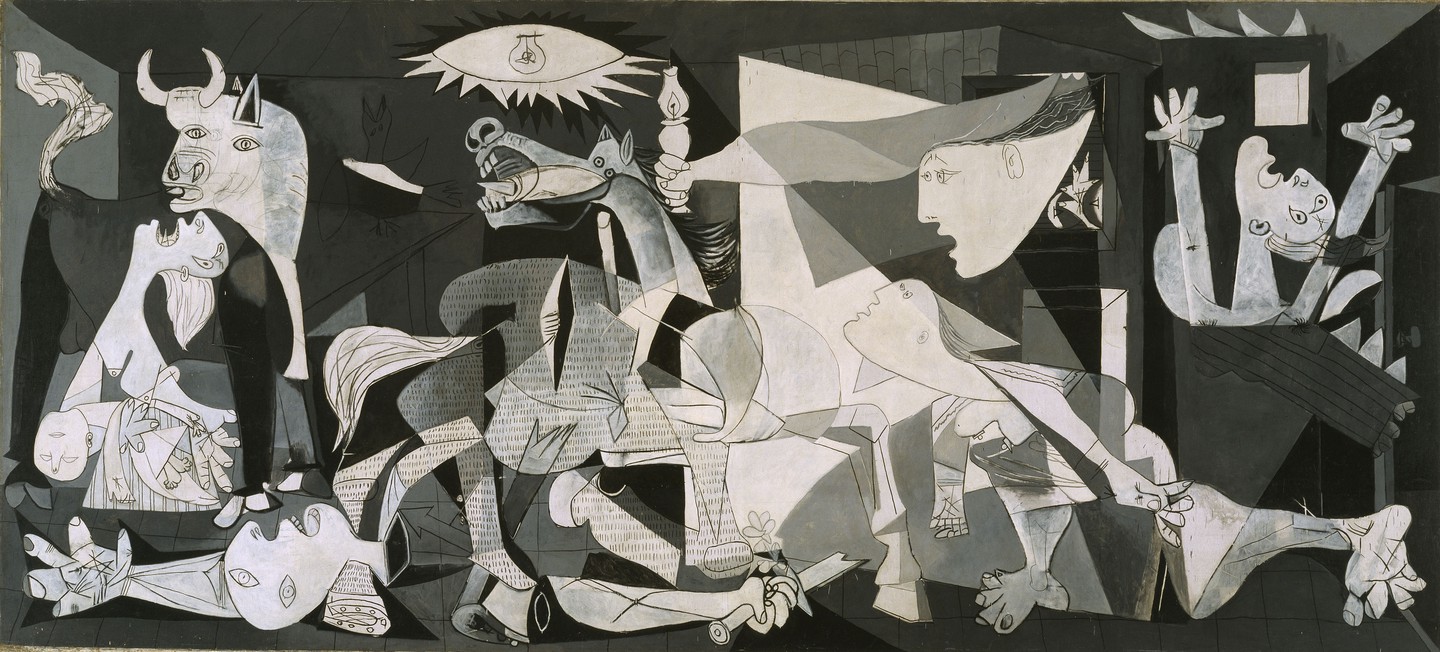
Thumbnail. Click to enlarge.
FULL VIEW - VERY LARGE: http://artpaintingartist.org/wp-content/uploads/2014/02/Guernica-by-Pablo-Picasso.jpg
FULL VIEW - LARGEST IMAGE - HIGHEST QUALITY AND HIGHEST RESOLUTION: https://guernica.museoreinasofia.es/gigapixel/en/#3/63.09/-120.56
PHOTO GALLERY - FULL VIEWS AND DETAILS: https://www.flickr.com/photos/profzucker/54411771817/in/photostream/
360 DEGREE PANORAMA: https://www.360cities.net/image/guernic...drid-spain
IMAGE FOR SCALE - MUSEO REINA SOFIA, MADRID, SPAIN: https://insidemuseums.files.wordpress.c...icasso.jpg
_________________
Best Classical
Best Films
Best Paintings
Last edited by AfterHours on 08/11/2025 16:08; edited 16 times in total
|
|
|
|
AfterHours
Gender: Male
Location: The Zone
- #105
- Posted: 05/26/2022 19:47
- Post subject:
|
Max Ernst (1891 - 1976)
Best Works:
7.5/10: The Entire City (1936) [Zurich Version]
8.2/10: Europe After The Rain II (1942)
The Entire City - Max Ernst (1936) [Zurich Version]

Thumbnail. Click to enlarge.
FULL VIEW - LARGE: https://external-preview.redd.it/zqtSug...7e731d8c90
VIDEO - MAX ERNST RETROSPECTIVE - The Entire City [Zurich] viewed in-person @ 2:57: https://vernissage.tv/2013/05/27/max-ernst-retrospective-at-fondation-beyeler/
-Notes for future analysis
-Simultaneously surrealist and straightforward, which creates a beguiling tension between ambiguity and clarity,
-The work is carefully painted and composed to maximize the ambiguous suggestions of mystery, of its allusion, of its suggestion of nightmare without outright horror
-Its three levels are carefully composed and depicted to push the viewer, through the act of observing and unraveling their intent, into the very state of thinking or recognition that is being suggested by the work itself, but indirectly, as if a magic, as if by osmosis
-The three levels of the painting probably represent: the imposing and glaring sun with the green and radiating sky is a metaphor for "the consciousness". The city ruins, its architectural symmetry and geometric design as a metaphor for "rational thought". The wild foliage or jungle below is a metaphor for "the subconscious".
-The "sun" is omnipresent upon all levels, lighting the sky, the gleam across the city, the lit foliage/jungle. The lower two levels are connected to each other and in hierarchical order and by order of awareness, but also as separately determined elements from the other.
-Each level is both representation and an abstraction. Ernst has found a very precise, beguiling and profound balance between these to maximize suggestion. In other words, are there really enough details to substantiate one's initial interpretive inclination or are these figurative depictions intentionally captured in an ambiguous state to arouse multi-faceted levels of suggestion and meaning, never completely determinate of one, but alluding to all simultaneously? Is the sun a "sun" as seems immediately clear, or in looking closely at how strange it looks, the lack of detail, the solidity and pressing glare of its yellow, is it merely an abstract concept of "sun", "the mysterious disc in the sky"? Is the sky clearly a "sky" or is its alien depiction really an abstract expressionist concept of "sky", an ominous and radiating green void; the "sky as a mystery"? Is the city clearly a city or is it as abstract as possible while still distilling that suggestion; the city as ruins, its contents once there, a mystery like so many ancient cities and structures? Is the "jungle" a "jungle" or is it an abstract concept of one?
-Seeing these at the levels of abstraction, invigorates the mind set that one is seeing them through ancient eyes, the early ancestors attempting to understand the world, the sky, the sun, the beginning of thought and learning, each being an abstract concept instead of an understood and thoroughly formulated whole. This profoundly reinforces the role and allusion of consciousness in the work, one's recognition of ancestral, anthropological consciousness at the dawn of intellectual thought.
-By way of Ernst's technique and how they're painted, he has also managed to imbue these levels as having been raped of their dignity or humanity, each in a ruinous and threatened state, overcome by the harbinger of nightmares, alluding to the threat and ideology of Naziism. This is a threat that is not just life and death and physical, but upon consciousness and ideology itself.
-As the work subtly evokes the idea of ancestral, anthropological consciousness, the origination and propagation of intellect and ideology, it draws a haunting parallel with this as an emergence and as an aftermath of the apocalyptic threat of the Nazi party.
-The glaring sun and sky has further connotations to the all-seeing eye, and perhaps the eye of the providence or allusions to similar pan-visio themes from an all-powerful force or threat
-The glaring, nightmarish, almost post-apocalyptic color schema of alien green and burning yellow blend, enhances the sense of imposing, looming evil
-Ernst further alludes to violence, or the threat of it, by the technique employed (so fittingly) to the the city ruins. In order to create the textured effect he used a technique called grattage, which involved running an object or piece of material, such as a plank of wood or the backbone of a fish, over the painted surface. Using this process he could incorporate unexpected marks and shapes and imbue the work with an element of chance. Grattage, a term coined by Ernst that means ‘scraping’ in French, was developed by the artist from a similar technique called frottage that involves rubbing a pencil or crayon over a piece of paper that is placed against a textured surface. (Tate) This is, in essence, a partially free form, somewhat violent technique upon the canvas.
Europe After The Rain II - Max Ernst (1942)

Thumbnail. Click to enlarge.
FULL VIEW - LARGE: https://www.flickr.com/photos/taigatrom...4n-2gMCr28
FULL VIEW - ZOOM FUNCTION: https://www.artsy.net/artwork/4f750b9124096b0001000504
FULL VIEW - VERY LARGE: https://en.artsdot.com/ADC/Art-ImgScree...ain-ii.Jpg
DETAIL - LEFT SIDE: http://www.humano.com/assets/BlogPost/2281/Max-Ernst_1_original.jpg
DETAIL - LEFT SIDE (Picture From a Book Cover): https://spectralpress.files.wordpress.com/2015/06/the-quarantined-city-part-4.jpg
DETAIL - LEFT SIDE/MIDDLE (Picture From a Book Cover): https://spectralpress.files.wordpress.com/2015/02/the-quarantined-city-part-2.jpg
DETAIL - LEFT/MIDDLE/RIGHT: https://lh6.googleusercontent.com/r6nOh...ADFh1trGwb
DETAIL - MIDDLE: https://c2.staticflickr.com/6/5014/5572626699_031052a72a_b.jpg
DETAIL - RIGHT SIDE: http://greynotgrey.com/blog/wp-content/uploads/2012/05/ernst6b.jpg
DETAIL - RIGHT SIDE (Picture From a Book Cover): https://spectralpress.files.wordpress.com/2015/04/the-quarantined-city-part-3.jpg
DETAIL - RIGHT SIDE (Picture From a Book Cover): https://spectralpress.files.wordpress.com/2015/01/the-quarantined-city-part-1.jpg
https://www.baltimoresun.com/resizer/FN...ALGYJA.jpg
https://pbs.twimg.com/media/D9miiNaXUAAz2CQ?format=jpg&name=large
_________________
Best Classical
Best Films
Best Paintings
Last edited by AfterHours on 05/24/2025 20:32; edited 7 times in total
|
|
|
|
AfterHours
Gender: Male
Location: The Zone
- #106
- Posted: 05/26/2022 20:01
- Post subject:
|
Salvador Dali (1904 - 1989)
Best Works:
7.5/10: The Persistence of Memory (1931)
8.3/10: Metamorphose de Narcisse (1937)
7.8/10: Crucifixion (Corpus Hypercubus) (1954)
The Persistence of Memory - Salvador Dali (1931)

Thumbnail. Click to enlarge.
FULL VIEW - HIGHEST QUALITY: https://www.moma.org/audio/playlist/3/163
FULL VIEW - VERY LARGE - IN SITU - VERY HQ: https://www.flickr.com/photos/flowcomm/52094943145
IMAGE - MUSEUM OF MODERN ART, NEW YORK, USA: https://farm9.static.flickr.com/8503/8333467635_fbe3c4404d_z.jpg
Rough draft...
-The painting is very small (approx 9.5 inches by 13 inches). As with many of Dali's masterpieces they appear to be of a size that closely approximates "the mind's eye" (mental imagery). This also greatly heightens the sensitivity needed to conduct the (often microscopic) detail and brushwork in such a super-fine, polished, "hyper" real manner. It means that the very act of his painting, so close to the canvas, so super fine in detail also (in its exactitude of strokes, and the bold and imaginative forms and color, heightened polish, the striking nature of its objects/figures) elicits an intensive immersion into the picture and an intensive self-analysis of each of its particulars (from the artist and as the viewer attempting to follow and assimilate his role and point of view).
-The hyper-realism of his figures and landscapes, "the uncanny" or "more real than real" (with a heightened sense of fascination), cognitive, epiphanic, wondrous, meanings fascinating and immersive but simultaneously elusive
-The work expresses in its treatment of color, the varied and subtle hues, its transcience of shading and light, the sense of dead-ness between its objects and solitude, a profound and contemplated melancholy and an almost devastated sense of displacement (echoing death and birth) that is the stuff of dreams/nightmares, or of memory, (versus the reality of real time and space and the present) but also intensely personal and psychological and so native and fundamental concern of people that it beckons an uncommon first person, subjective immersiveness about his work and in its reflection of both its creator and in correlation with one self
-The figures and landscape and how their composed about the canvas are both inter-related but somewhat indirectly. They are subtly, perhaps subliminally, arranged, so that they are related but also elusive of each other, uniquely characteristic of Dali's compositional skill. There is just enough inter-relation and order to suggest connection but there is also a sense of displacement with where each is that borders just past breaking the rules of pictorial arrangement (and the treatment of perspective being flummoxed) while still also vaguely or partially anchored to it, so that this inter-relationship creates a sense between the figures/objects that is similar to two magnets turned the wrong way that seem to be able to mesh but push each other away from each other as they get too close.
-In the super polished technique of Dali's work (and the mysterious and even supernatural figuration, glow, immersiveness...) speaks of the Italian Renaissance (Caravaggio, Raphael, Bellini, Da Vinci, Michelangelo, echoes of Bosch, or in some ways from his Spanish heritage with Velazquez) and of course atmospherically and in solitude his modern Surrealist forebear in De Chirico. Conceptually, thematically, the ultra modern with fusing the figurative and representational impetus of the past with the "first person" and "states of mind" of modern art that the viewer or Dali, as Dali, is directly immersed in as their own, first person, as opposed to looking at the creation of another in the third person (this fusion seems thought out and intentional as a fundamental to his craft, Dali being Spanish but having studied great Renaissance masters, reflective, coming to being in an increasingly modern, scientific, psychologically concerned, "age of anxiety" world)
-The transcience, how this visual world moves or transfers from the back of the painting, through and over the figures, to the darkness of the front, reflects the transcience and slow progression of time and thought (stream-of-conscious thought, in limbo between waking and dreaming)
-The symbolism of the work seems to begin from the background which also gives subtle clues to its other forms. First being the jagged cliffs, which are drawn, painted from Dali's home of Port Lligat, a dream bordering on nightmare (in its "hyper" realism) straight out of his childhood. Subtly, these cliffs are mirrored and split into two into a reflection on the water below which, without break, merges directly into the immediate land (even merging color, the transcience of time, space, thought) which upon the shore holds an egg (that one would probably first think a rock, a more solid and permanent form like the cliffs it "derived" from in this stream-of-conscious progression). The eggs are probably symbolizing birth and the prenatal period, again harking back to being born and the similarity between waking up after sleep (as being born or rebirth) and sleeping or unconsciousness (as a form of dying). This area of the painting, with its golden light is the most cognitive, the most "waking"; also the farthest in time and thought from the immediate present.
-Furthermore, an essential facet to the work is begun here, in the doubling, reflection of the cliff, we have an initial dichotomy, ambiguity, tension. That of waking and sleeping, the paralleling transcience or permanence of time (it's always there but always changing). The actual cliffs are permanent; the watery reflection of the cliff is transient. A rock is more or less permanent, the uncanny and displaced egg that it has become in the subconscious or dreams, is transient. The sky and it's double (the ocean) carry this same correlation, particularly with regards the uncanny "mirror" or metal square that anomalously, like the egg, stations itself on the shore, casting from it similar (but transforming, darkened) colors of the sky and lake.
-Nearing closer to the foreground we are firmly on land, and an increasing shadow of darkness overtakes it.
-In the middle of the painting we have a distorted face that recalls that of Bosch's Garden of Earthly Delights and its left wing panel where a rocky formation gets personified into signifying the transience of thought from a higher consciousness (at the very height of the painting, God) and is a point that is descending in consciousness and personification down from that into the more and more grounded space of the painting. Dali has been applying this motif in his own idiomatic way. Here the face is vaguely of Dali, but again it is distorted, a representation vacillating between reality and the subconscious (partially real, partially alien, partially there, partially not). It fades into the land and along the rock where it rests.
-This distorted face likely is also meant to ("subconsiously") evoke the idea of a dead or dying fish or amphibian landlocked onto the short, perhaps seeing such beckons a nightmare from childhood or Dali's youth, or simply thoughts of mortality, death (it is common for children, seeing such a thing, to become aware of mortality and no longer think of themselves or other things as infinite or immortal). This is yet another reflection, thought, stream-of-conscious element, along the sense that Dali is conveying between transience and permanence, between relative factors between objective and subjective.
-Above this and to the left side of the painting we have a dead, even metallic looking, tree. Again, something alive has become hardened into a state of appearing "permanent". Additionally, we have the very imaginative visions of "melting" clocks, the highest and "deadest" one draped on the branch of the dead tree. Another one draped over the back of the distorted Dali face, while another is draped over the top end of an unnatural formation.
-We also have a strangely placed fly needling at the clock as if it is a dead animal (again, metaphor/symbol of death).
-And then we have another clock, turned face down, with ants eating away at it, to further express the notion of death, decay.
-All of these are notions and metaphors for the relativity of time, the displacement and solitude of the self from universal time, one's own time versus the natural time that nature follows. Even the natural land and nature in the painting has been confused or conflated with personal time and space and being born. Even the nature has been confused by the personal obsession and subconscious desire to upset this flow and interject one's anomalous and distorted sense of reality, time and place, into the reality of the scene. The subconscious, the individuality of the person (Dali) is being confused and displaced into nature, into reality. The subjective with the objectivity and the natural cycle of nature.
-Anomalously and unnaturally again, we have an impossible formation in nature where the tree, the clocks, rests and appears to have originally grown from: a rectangular or square block that is also generated from the same, yet even more unnaturally, it is not shaded the same, not catching the same light and not aligned to the same perspective.
-The perspective here has suddenly become more immediate, unnaturally upsetting the flow and sense of motion, back to front of the picture into the present. The present has now become more immediate as the perspective has become more forced. The point of view the work is evoking started much more slowly and dreamily from the background and as we have arrived in the foreground it's suddenly been forced, and immersed further into the deep of its darkness, into a forced and sudden dip into greater unconsciousness than it began. However, the closest foreground is also ambiguously split in its darkness (the unnatural block is lit differently than the land) to suggest a stark immediacy wherein like a nightmare where one is aware of oneself (somewhat) but also sleeping and the nightmare seems all too real, there can be a shocking or sudden moment of waking but just before one fully wakes one is simultaneously "in" the nightmare and shocked into reality but hasn't quite grasped the finite consciousness of either and is still displaced, confused, alone between two spaces, realities, as if a split being that is experiencing the doubled, relativity of time-space as if in two parallel places and times at once (and the painting has subliminally beckoned this in its objects/figures from its background up to the foreground). That is the front of this painting, in its immediacy, its forced perspective and the unnatural split left to right of both lighting/darkness and in land and figuration.
-This would also begin Dali's artistic expression of his own personality crises (borderline disturbing and ridiculous, simultaneously analytic, calculated and yet chaotic, madness) the personal devastation of which is masked by the absurdity and chaos (nevertheless enveloped by an "inner-ness" and loneliness) at once partially subconscious but also in self-analysis and with referential self-awareness; that of his obsession with upending reality with his own individuality and the dichotomy between his own sense of loneliness, his obsessive need to draw attention to fulfill this but never escape or solve it, the constant sense that he is displaced in a world that can't contain him and that he is forever lonely in and unfulfilled by. This would grow, throughout his career, into an increasing feeling of impotence and propitiation in his relations with his wife, in his obsessive (and sad) need to draw and absorb attention from others (and never lose them, no matter the pain caused), and in his increasing need to shake things up with ever more absurd media circuses and events, eventually culminating with his own Dali museum. All of this is fundamentally here or sourced or beckoned or alluded to in this first masterpiece of his career, and so it has the added compelling nature and ingenuity (and in accomplishing, perhaps culminating, the goal of Surrealism) of apparently expressing things that are at the source of his own personality and Art, the subconsciousness underlying his reality.
Metamorphose de Narcisse - Salvador Dali (1937)
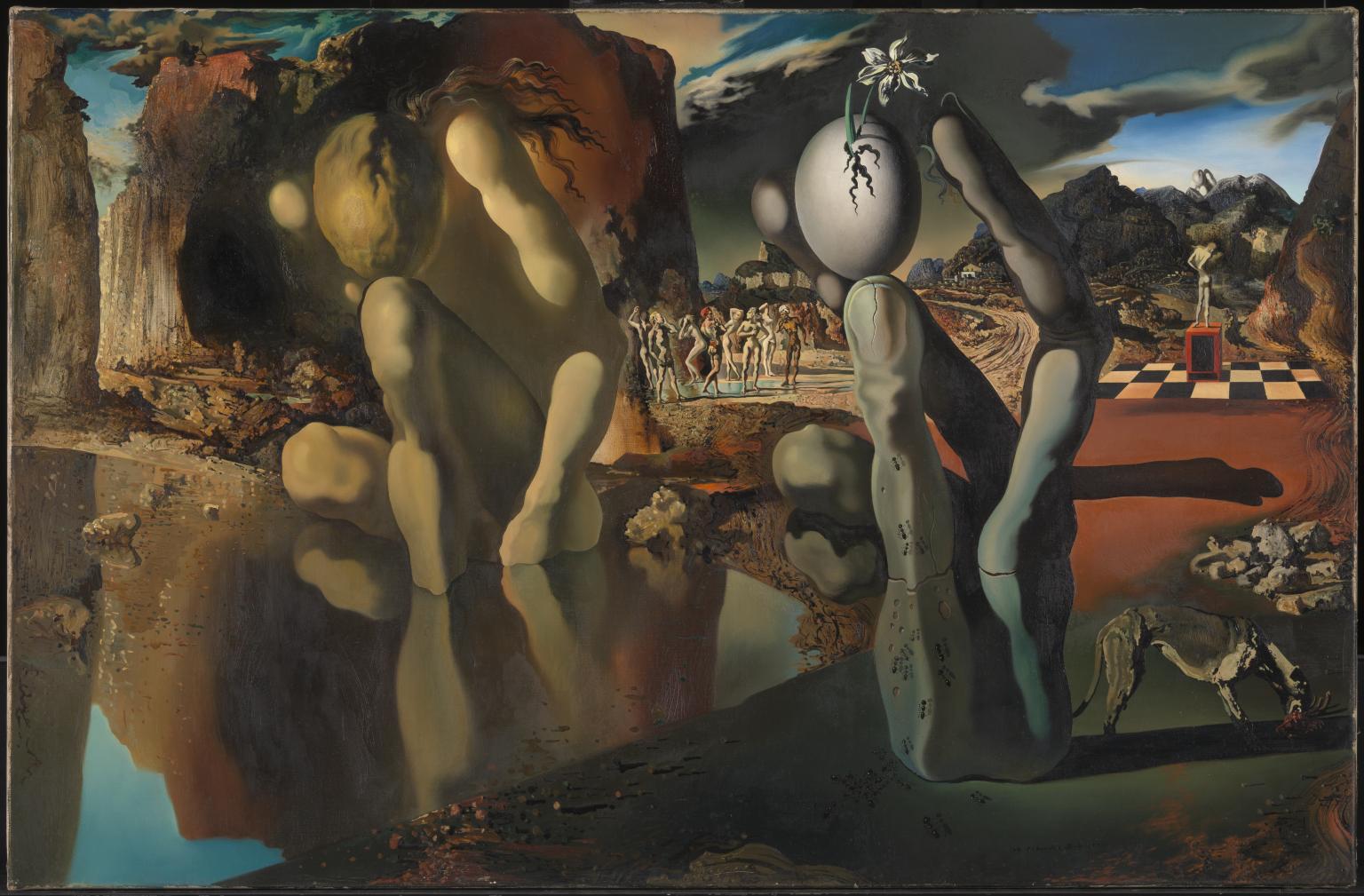
Thumbnail. Click to enlarge.
FULL VIEW - LARGE: https://www.flickr.com/photos/escriteur/10979676344
FULL VIEW - VERY LARGE: https://loseweightandgainhealth.files.wordpress.com/2014/02/dali-painting.jpg
DETAIL: https://henitalks.com/wp-content/uploads/2019/06/title.jpg
IMAGE FOR SCALE - TATE MUSEUM: https://www.dreamstime.com/london-unite...e118935388
IMAGE FOR SCALE - TATE MUSEUM: https://www.flickr.com/photos/profzucker/5311661956/in/photostream/lightbox/
Crucifixion (Corpus Hypercubus) - Salvador Dali (1954)
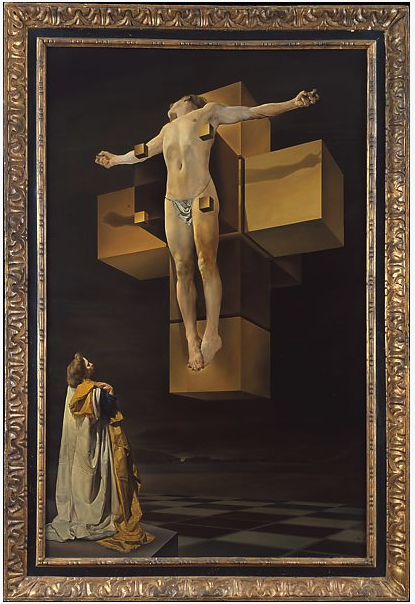
Thumbnail. Click to enlarge.
FULL VIEW - VERY LARGE - HIGH QUALITY: https://i.redd.it/qzl2hpn6zw451.jpg
DETAIL: https://c2.staticflickr.com/2/1067/5146877497_b27fd1ab9c_b.jpg
The Fourth Dimension - Constructing the Hypercube https://www.youtube.com/watch?v=f_7ItDbgOJU
https://www.flickr.com/photos/edcnyc/33436167978/
SCALE: https://www.flickr.com/photos/faun070/28471818872/
_________________
Best Classical
Best Films
Best Paintings
Last edited by AfterHours on 08/11/2025 16:04; edited 20 times in total
|
|
|
|
AfterHours
Gender: Male
Location: The Zone
- #107
- Posted: 05/26/2022 20:15
- Post subject:
|
Rembrandt van Rijn (1606 - 1669)
Best Works:
7.0/10: Self-Portrait, Age 23 (1629)
7.3/10: Anatomy Lesson of Dr. Nicolaes Tulp (1632)
7.0/10: Self-Portrait in Oriental Costume with Poodle (1631 - 1633)
7.1/10: Landscape With Stone Bridge (1637 - 1638)
7.4/10: Belshazzar's Feast (1638)
7.9/10: The Night Watch (1642)
6.8/10: The Mill (1648)
7.0/10: Self-Portrait (1658) [Frick Collection, New York]
7.0/10: Self-Portrait (1659) [National Gallery, Washington D.C.]
6.8/10: The Denial of Saint Peter (1660)
7.0/10: The Syndics of the Drapers' Guild (1662)
6.9/10: The Jewish Bride (1665)
7.4/10: Lucretia (1666) [Minneapolis Institute of Art Version]
7.4/10: Return of the Prodigal Son (circa 1667 - 1669)
7.0/10: Self-Portrait at the Age of 63 (1669)
Self-Portrait, Age 23 - Rembrandt van Rijn (1629) / Isabella Stewart Gardner Museum, Boston, USA [Painting]

Thumbnail. Click to enlarge.
FULL VIEW - VERY LARGE: https://upload.wikimedia.org/wikipedia/...Museum.jpg
FULL VIEW - VERY HQ - ZOOM FUNCTION: https://www.gardnermuseum.org/experience/collection/10955
Anatomy Lesson of Dr. Nicolaes Tulp - Rembrandt van Rijn (1632)
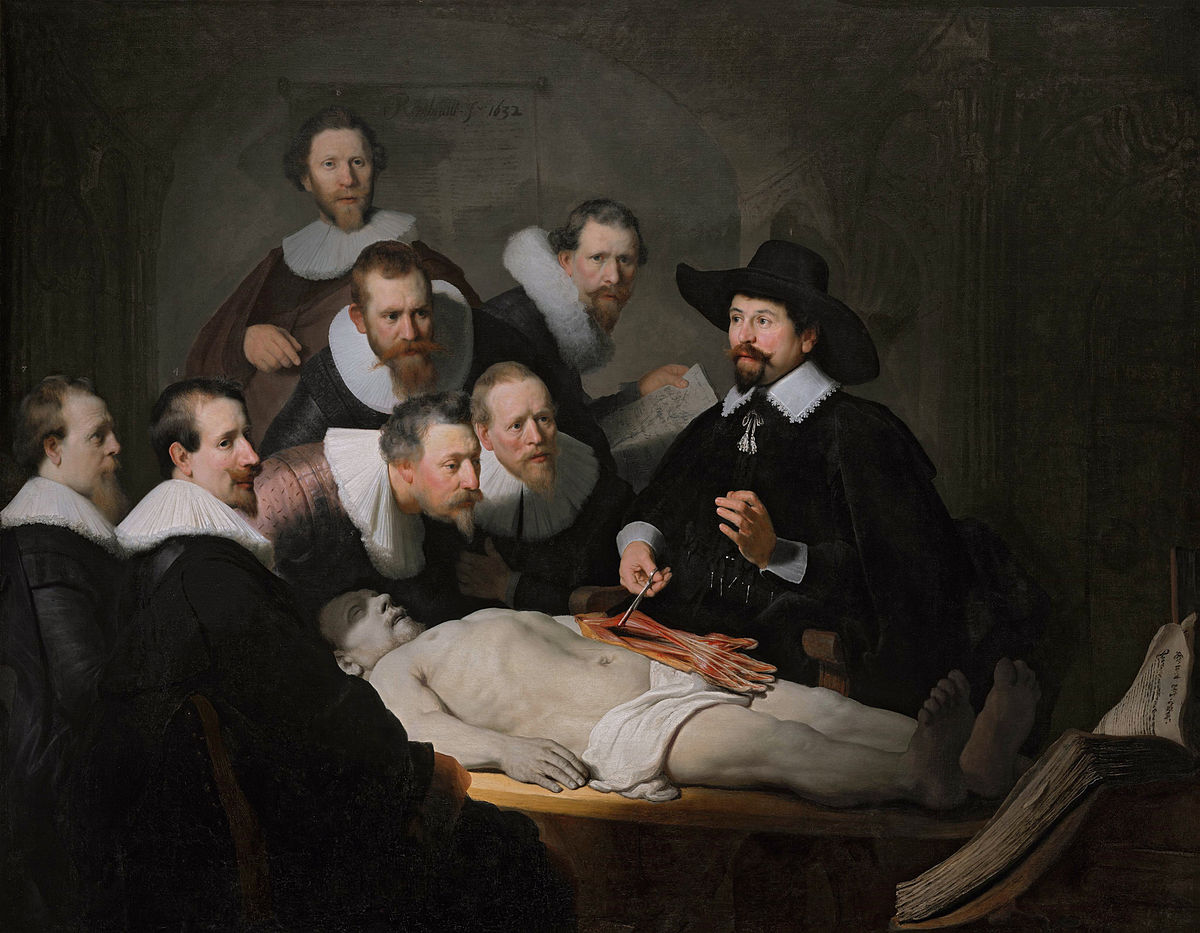
Thumbnail. Click to enlarge.
FULL VIEW - VERY LARGE - HIGHEST QUALITY: https://upload.wikimedia.org/wikipedia/...s_Tulp.jpg
FULL VIEW - HIGHEST QUALITY - ZOOM FUNCTION: https://artsandculture.google.com/asset...6gEg?hl=en
IMAGE: http://www.around-amsterdam.com/images/around-amsterdam-den-haag-27.jpg
Self-Portrait in Oriental Costume with Poodle - Rembrandt van Rijn (1631 - 1633) [Painting]

Thumbnail. Click to enlarge.
FULL VIEW - LARGE: https://upload.wikimedia.org/wikipedia/...282%29.jpg
FULL VIEW - VERY LARGE: https://upload.wikimedia.org/wikipedia/...n_Rijn.jpg
DETAIL: https://upload.wikimedia.org/wikipedia/...is_-_5.jpg
Landscape With Stone Bridge - Rembrandt van Rijn (1637 - 1638) / [Painting]
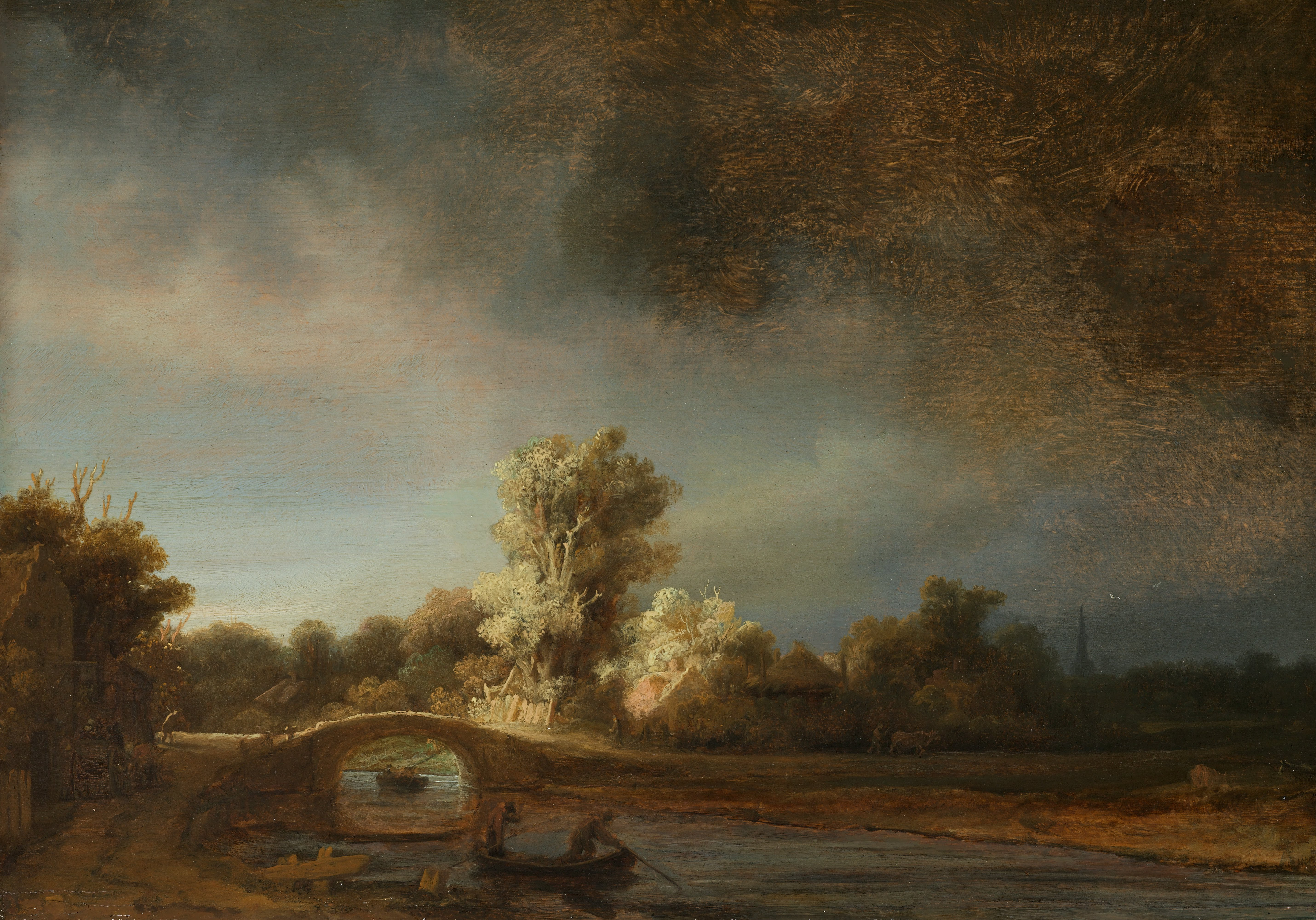
Thumbnail. Click to enlarge.
FULL VIEW - HQ - ZOOM FUNCTION: https://www.rijksmuseum.nl/en/collectio...5799c2d0a4
Belshazzar's Feast - Rembrandt van Rijn (circa 1635 - 1638) / The National Gallery, London, England [Painting]

Thumbnail. Click to enlarge.
FULL VIEW - VERY LARGE - HIGH QUALITY: https://upload.wikimedia.org/wikipedia/commons/0/0e/Rembrandt-Belsazar.jpg
FULL VIEW - VERY LARGE - HIGHEST QUALITY - ZOOM FUNCTION: https://www.nationalgallery.org.uk/paintings/rembrandt-belshazzar-s-feast
IMAGE FOR SCALE - NATIONAL GALLERY: https://www.dreamstime.com/london-engla...e138707307
The Night Watch - Rembrandt van Rijn (1642)
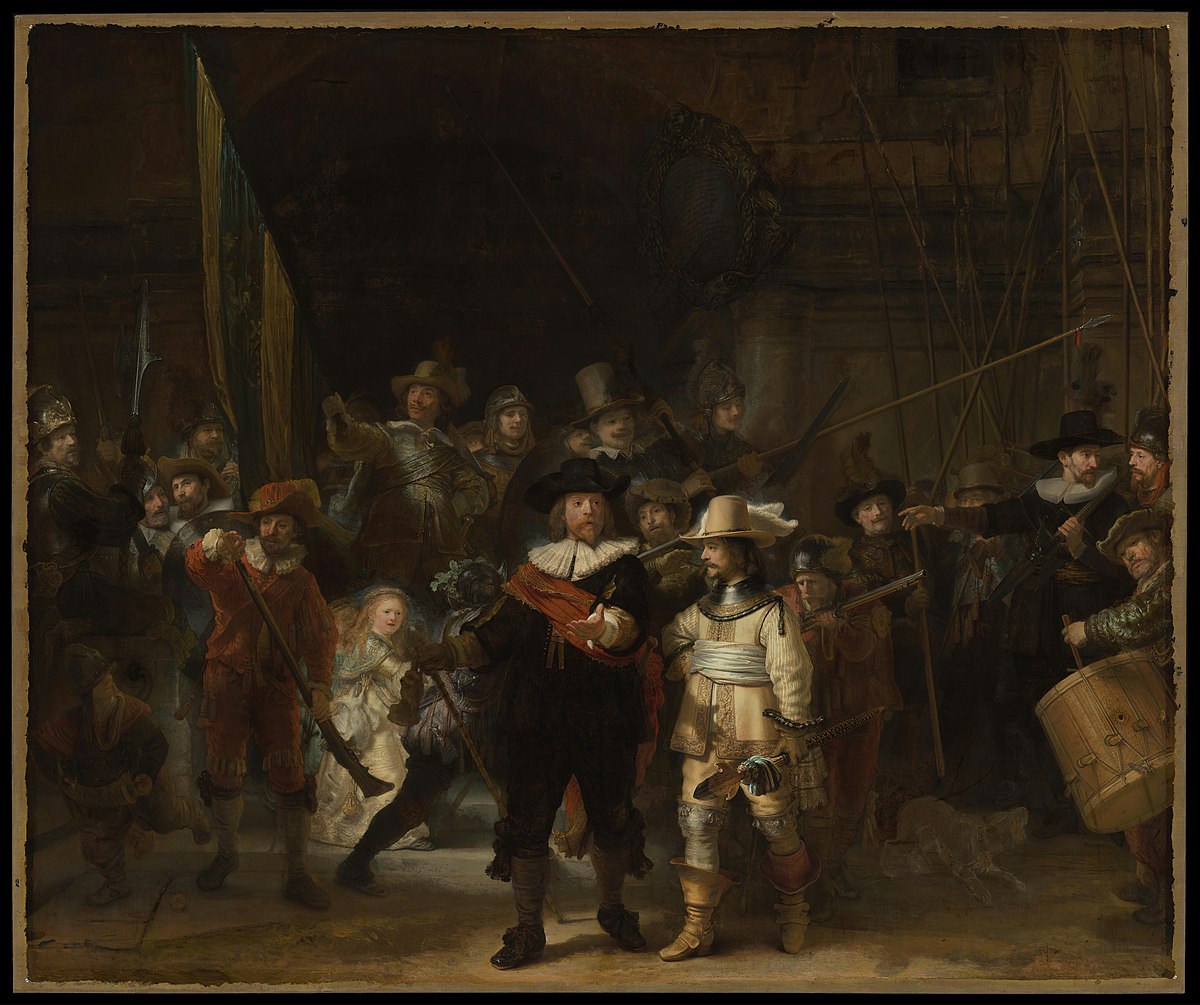
Thumbnail. Click to enlarge.
FULL VIEW - VERY LARGE - VERY HIGH QUALITY - ZOOM FUNCTION: https://www.rijksmuseum.nl/en/rijksstudio/artists/rembrandt-van-rijn/objects#/SK-C-5,0
FULL VIEW - LARGEST IMAGE - HIGHEST QUALITY AND HIGHEST RESOLUTION - ZOOM FUNCTION: http://hyper-resolution.org/view.html?p...2019-12-21
PHOTO GALERY - FULL VIEWS, DETAILS, IMAGE FOR SCALE: https://www.flickr.com/photos/profzucker/16789603506/in/photostream/
IMAGE - RIJKSMUSEUM, AMSTERDAM, NETHERLANDS: https://i.guim.co.uk/img/media/6c8bb35b...f0ef7d81ec
IMAGE - RIJKSMUSEUM, AMSTERDAM, NETHERLANDS: https://s.france24.com/media/display/b0...ndt-m.webp
IMAGE - RIJKSMUSEUM, AMSTERDAM, NETHERLANDS: https://www.flickr.com/photos/menesje/8693243033/in/photostream/lightbox/
IMAGE FOR SCALE - Rijksmuseum, Amsterdam, Netherlands: https://www.dreamstime.com/editorial-ph...ge51528491
Notes for future (more complete, polished) analysis...
-Metaphor for Plato's Cave
-Rembrandt's impasto and "sfumato" (using striking lead white with varying gradations of deep and medium darkness and his own brand of aerial perspective) causes figures and distance to recede from rough and highly palpable (physical, the synergy of paint mixtures) conceptions to increasingly smooth and indistinct (key to realize that the indistinctness of character is intentional, not because they were too small to paint with detail and more vividly; those figures receding to the back are nearly life sized). This physicality of a single figure, and then the gradation of them from front-to-back, is a metaphor for "coming into being" as they reach out from the picture space into real space and become aware of themselves as individuals (not under the oligarchy which directs them) and no longer a mere "pose" or caricature (exemplified most by the two leads the portrait is centered around, flanked by the light between the girl and Lieutenant)
-At least as importantly, combined with judiciously placed varnish, and the varied stages of chiaroscuro across the work, this causes light to reflect off the painting in a variety of ways. Because of the special sparkling effect and these contrasts, the gleam of light, at different stages and different ways, illuminates the figures "from within", in undulating refraction, giving them a soul (his own way of accomplishing what Leonardo did, especially with Mona Lisa and Virgin on the Rocks).
-Lieutenant's spear reaches out of the front of the canvas (its shadow in the portrait is incomplete, cuts off at the edge of the picture plane, without reflecting the head of the spear, which exists beyond it)
-Captain's hand, its shadow, "grabs" the company's emblem on Lieutenant's coat. His hand itself is also reaching out of the picture plane, at the same time directing and leading the action (also a metaphor for Rembrandt who is painting it)
-3 gunsmen are enacting 3 stages of handling weapon (loading, firing, cleaning). This is an action that also symbolizes and "announces" the name of the company. More importantly, a metaphor for their job, which is to notice anomalies in their city and take action (they are veiled by shadow in the painting, the girl is noticing the middle one, the force and smoke of the shot is hidden by the Lieutenant's cap/feather in front of him, the composition subtly directs one to it but in an unusual way that bypasses tension and one's expected progression of composition). Yet more importantly, this series of anomalies, also connected to the two leads in front, is composed so as to set off one's epiphany of the paintings' higher purpose, which is refracted and developed across the rest of the work (a liberation from Plato's Cave): the action of the company noticing anomalies in the real world, is a metaphor for leaving the cave and learning the reality outside of it; the action of the viewer (and by extension, Rembrandt, painting the canvas) noticing this, is the causality of discovering the purpose of the painting and learning from it
-Each individual lost in the distraction, action and generality, lost in his own world of his military "post", but painted (up close) as individuals with receding individuality that fades towards the depth of the arcade (cave) that they are painted as if emerging and fanning outwards from.
-They are, simultaneously, as much as they are individuals, may be variations of the same person (the further one recedes). May be a metaphor or subtle variations for Rembrandt himself, his self portrait hidden at the back of the painting, finding his way out of Plato's Cave, peering out from the back end of the canvas, through the chaos of figures, light and shadow, to the real world outside of it, the back-to-front progression of which is also characterized by the hierarchy of how these figures have been painted
-Tension between individual (each a personal portrait) and national (collectively a group portrait), simultaneously chaotic and unified.
-Tension AND fusion of portraiture and the baroque (flamboyance of action) history painting; each individual is an individual portrait; the collection of them a group portrait; but also, each are both active and static, an in-betweeen-ness of both movement and pose. And due to the composition and monumentality, the work also alludes to major historical scenes without losing its inherent nature of portraiture. It is an astonishing composition (and tension) of each of these at once, both versus each other and as a fusion.
-Metaphor for the progression of the 80 years war (which was 70 years ongoing at the time), chaos becoming unity
-Metaphor for the oligarchy of the time, not being able to eliminate/supersede the true individual and his liberation from that reality (leaving the shadows and illusions of Plato's Cave). All other such group portraits were being made to satisfy the guild, and by extension, the oligarchy (and Maria de Medici). Rembrandt's was truly individual, and represents its liberation as a whole and in its details.
-Composition is directed and framed inside by its two leads, the spot-lit girl, the weapons and polls, the flag of the left being raised, and the farther polls and drummer at the far right, plus the arcade in the back. This causes a duality of movement, that is alluding to a cris-crossing in angles that, at the very next moment after the picture is captured, may defy the Captain's direction, the painting being caught in this perpetual tension of "in-between-ness", at the height of an organization that is about to become a confusion of individuals (no longer a group formed by oligarchy).
-Rembrandt, between the painter, and the self-portrait in the back of the painting, is a metaphor for reality being caused by the consciousness of one being placed in the future (to pull one from one's present reality to what one wants or intends), which is the liberation of the individual from the restraints of circumstance. (NOTE: explain this more)
NOTE to self: Needs to be tied together more and other characters and actions, should be addressed too, as well as tied in more with the themes, overall purpose.
The Mill - Rembrandt van Rijn (1648) / The National Gallery, Washington D.C., USA [Painting]

Thumbnail. Click to enlarge.
FULL VIEW - VERY HQ - ZOOM FUNCTION: https://www.nga.gov/artworks/1201-mill
Self-Portrait - Rembrandt van Rijn (1658) / Frick Collection, New York, USA [Painting]

Thumbnail. Click to enlarge.
FULL VIEW - VERY LARGE: https://upload.wikimedia.org/wikipedia/commons/9/9a/Rembrandt_Harmensz._van_Rijn_130.jpg
FULL VIEW - VERY LARGE: https://www.flickr.com/photos/hen-magonza/31559513534
FULL VIEW - VERY LARGE: https://upload.wikimedia.org/wikipedia/...roject.jpg
FULL VIEW - ZOOM FUNCTION: https://artsandculture.google.com/asset...Hgnw?hl=en
Self-Portrait - Rembrandt van Rijn (1659) / The National Gallery, Washington D.C., USA [Painting]

Thumbnail. Click to enlarge.
PHOTOS - FULL VIEW & DETAIL: https://www.flickr.com/photos/rverc/48977597077
FULL VIEW - LARGE: https://upload.wikimedia.org/wikipedia/...roject.jpg
FULL VIEW - ZOOM FUNCTION: https://artsandculture.google.com/asset/self-portrait-rembrandt-van-rijn/-gHQe8vbiHn2xw?hl=en
FULL VIEW - VERY HQ - ZOOM FUNCTION: https://www.nga.gov/artworks/79-self-portrait
The Denial of Saint Peter - Rembrandt van Rijn (1660)
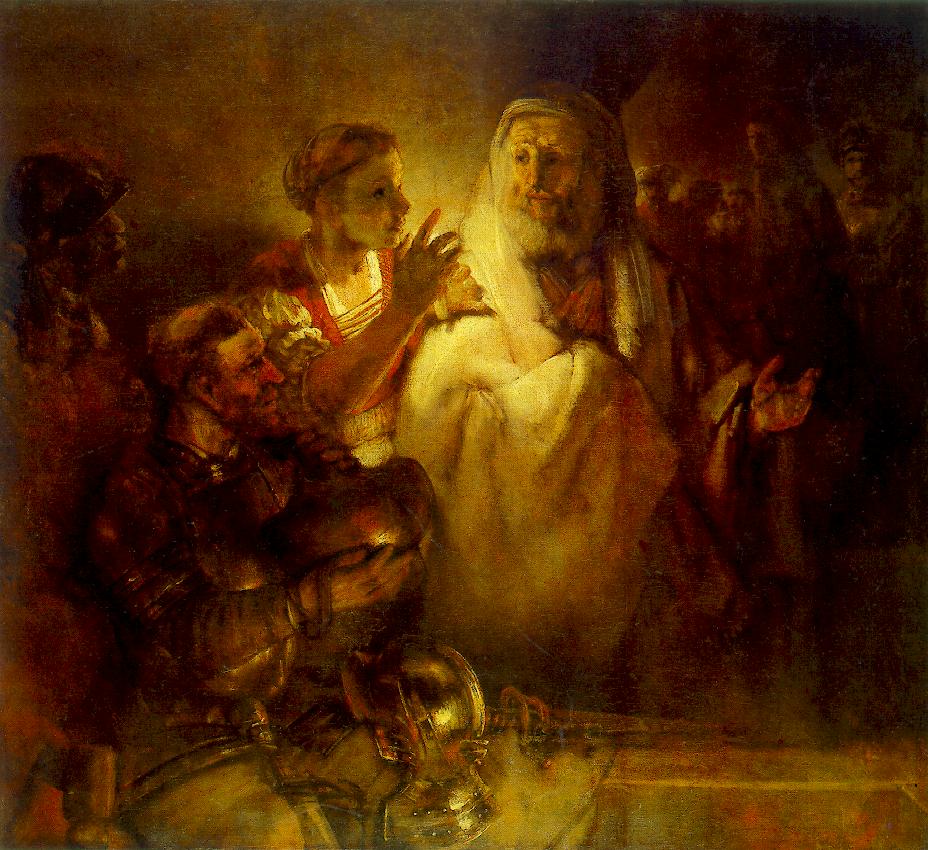
Thumbnail. Click to enlarge.
FULL VIEW - VERY LARGE - HIGHEST QUALITY: https://www.rijksmuseum.nl/en/collection/SK-A-3137
FULL VIEW - VERY LARGE: https://upload.wikimedia.org/wikipedia/commons/a/a8/Rembrandt_Harmensz._van_Rijn_012.jpg
FULL VIEW - VERY LARGE - ZOOM FUNCTION: https://artsandculture.google.com/asset/de-verloochening-van-petrus/YQHDAgsHmxbUQA?hl=en
IMAGE FOR SCALE - Rijksmuseum, Amsterdam, Netherlands:
The Syndics of the Drapers' Guild - Rembrandt van Rijn (1662)
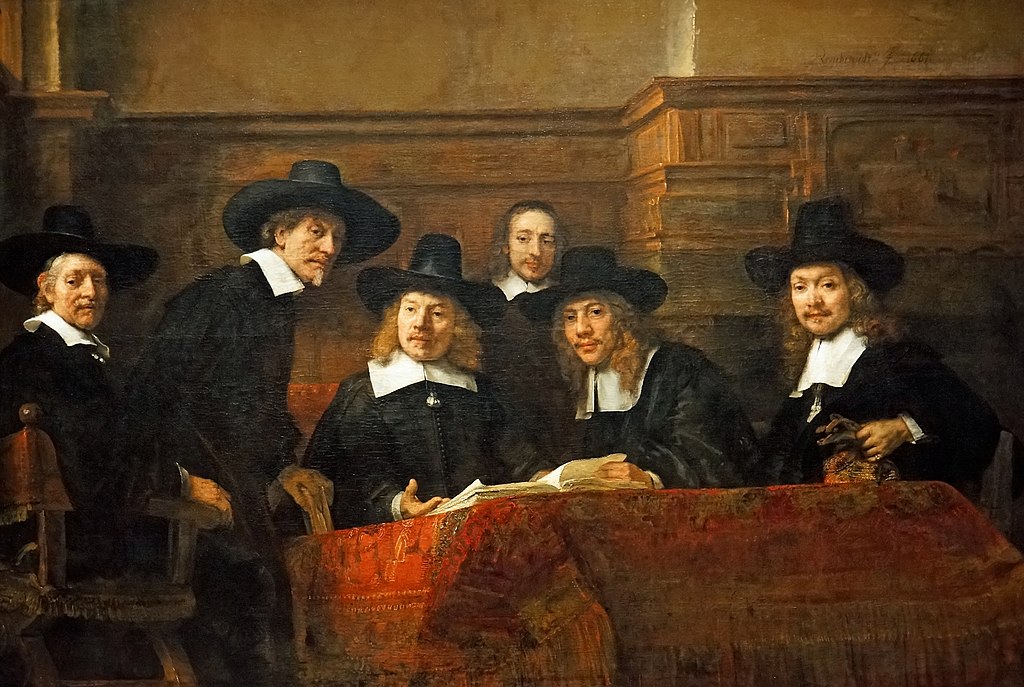
Thumbnail. Click to enlarge.
FULL VIEW - VERY LARGE: https://upload.wikimedia.org/wikipedia/...roject.jpg
FULL VIEW - VERY LARGE - ZOOM FUNCTION: https://artsandculture.google.com/asset/the-syndics/ZgHt6DZhk-6SVw?hl=en
FULL VIEW - VERY HQ - ZOOM FUNCTION: https://www.rijksmuseum.nl/en/collectio...3b32f7c234
IMAGE FOR SCALE - Rijksmuseum, Amsterdam, Netherlands: https://www.flickr.com/photos/slice/103534393
The Jewish Bride - Rembrandt van Rijn (1665)
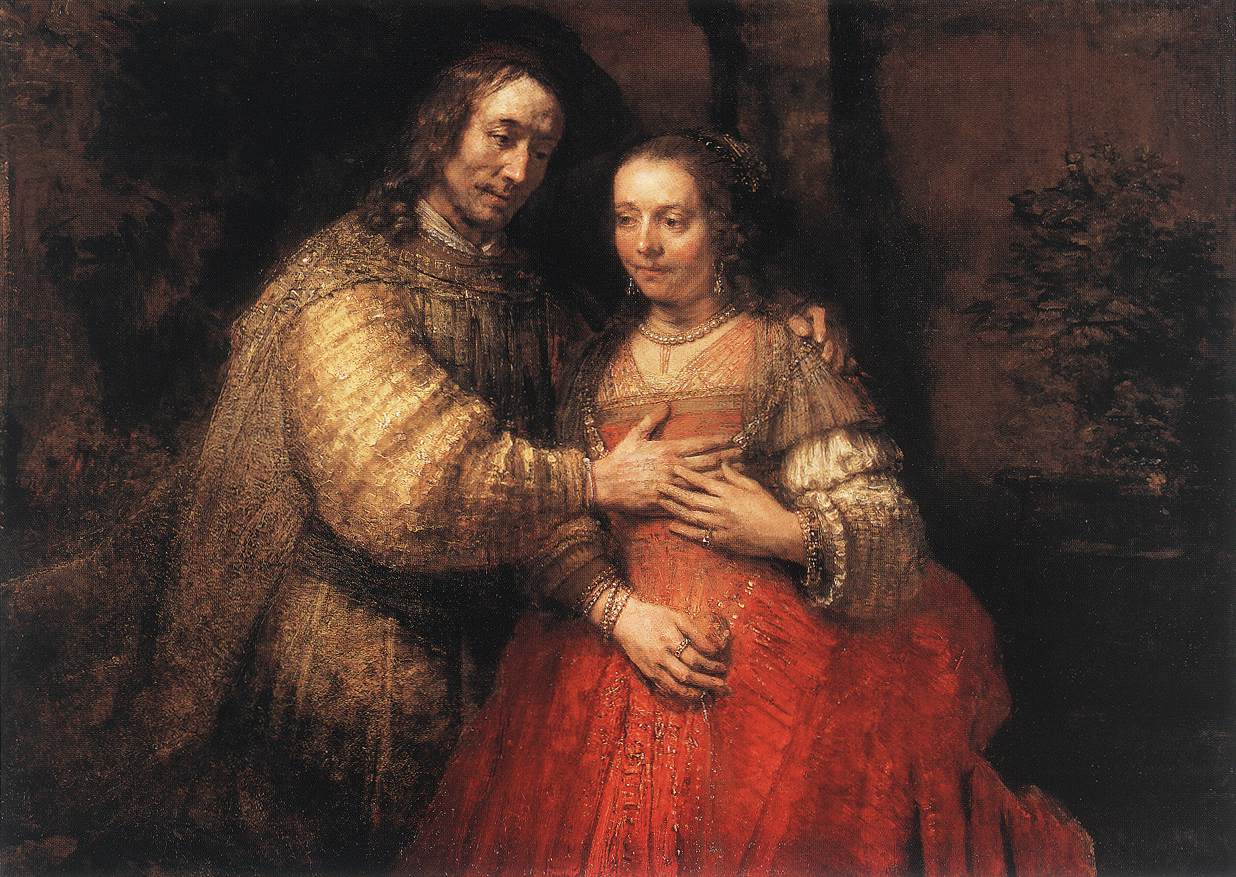
Thumbnail. Click to enlarge.
FULL VIEW - VERY LARGE - ZOOM FUNCTION: https://artsandculture.google.com/asset...Ossw?hl=en
FULL VIEW - VERY LARGE - HIGHEST QUALITY - ZOOM FUNCTION: https://www.rijksmuseum.nl/en/collection/SK-C-216
IMAGE FOR SCALE - Rijksmuseum, Amsterdam, Netherlands: https://www.rembrandtpaintings.com/images/the-jewish-bride-photo.jpg
Lucretia - Rembrandt van Rijn (1666) [Minneapolis Institute of Art Version]

Thumbnail. Click to enlarge.
FULL VIEW - LARGE - HIGH QUALITY: https://upload.wikimedia.org/wikipedia/commons/7/7d/Lucretia_1666_Rembrandt.jpg
FULL VIEW - VERY LARGE - VERY HIGH QUALITY: https://upload.wikimedia.org/wikipedia/...shA%29.jpg
IMAGE - MINNEAPOLIS INSTITUTE OF ART: https://images.artsmia.org/wp-content/uploads/2015/06/01043315/Lucretiaacquired.jpg
Return of the Prodigal Son - Rembrandt van Rijn (circa 1667 - 1669) / Hermitage Museum, Saint Petersburg, Russia [Painting]

Thumbnail. Click to enlarge.
FULL VIEW - MEDIUM: https://www.flickr.com/photos/einarorn/229167830/
FULL VIEW - MEDIUM: https://www.flickr.com/photos/suraark/7570395262
FULL VIEW - MEDIUM: https://www.flickr.com/photos/ryanhadley/28263870067
FULL VIEW - MEDIUM (with additional light): https://www.flickr.com/photos/92991518@N07/8647387831/
FULL VIEW - LARGE: https://www.flickr.com/photos/travelingmipo/17120766932
FULL VIEW - VERY LARGE - ZOOM FUNCTION: https://www.wikiart.org/en/rembrandt/the-return-of-the-prodigal-son-1669
FULL VIEW - VERY LARGE - HIGHEST QUALITY AND HIGHEST RESOLUTION - ZOOM FUNCTION: https://artsandculture.google.com/asset/return-of-the-prodigal-son/5QFIEhic3owZ-A?hl=en
IMAGE FOR SCALE: https://www.exeterinternational.com/wp-content/uploads/2016/03/Helen-with-Prodigal-son.jpg
Self-Portrait at the Age of 63 - Rembrandt van Rijn (1669) [Painting]

Thumbnail. Click to enlarge.
FULL VIEW - VERY LARGE: https://upload.wikimedia.org/wikipedia/commons/7/7c/Rembrandt_Harmensz._van_Rijn_135.jpg
FULL VIEW - VERY HQ - ZOOM FUNCTION: https://www.nationalgallery.org.uk/paintings/rembrandt-self-portrait-at-the-age-of-63
Last edited by AfterHours on 07/01/2025 18:41; edited 33 times in total
|
|
|
|
AfterHours
Gender: Male
Location: The Zone
|
AfterHours
Gender: Male
Location: The Zone
- #109
- Posted: 05/26/2022 20:34
- Post subject:
|
Michelangelo Caravaggio (1571 - 1610)
Best Works:
6.4/10: Young Sick Bacchus (circa 1593) [Painting]
7.0/10: Bacchus (circa 1595) [Painting]
6.2/10: Medusa (1597) [Painting]
6.1/10: Rest on the Flight into Egypt (circa 1597) [Painting]
6.5/10: Narcissus (circa 1597 - 1599) [Painting]
5.8/10: David and Goliath (circa 1600, probably before 1599) [Painting]
6.8/10: Judith Beheading Holofernes (circa 1598 - 1599) [Painting]
5.6/10: David with the Head of Goliath (circa 1600 - 1601) [Painting]
7.7/10: St. Matthew Cycle: The Calling of St. Matthew; The Inspiration of St. Matthew; The Martyrdom of St. Matthew (1599 - 1600; 1602) [Painting]
7.4/10: The Crucifixion of Saint Peter and The Conversion of Saint Paul on the Road to Damascus - Michelangelo Caravaggio (1600 - 1601) [Painting]
7.2/10: Supper at Emmaus (1601) [London Version] [Painting]
7.1/10: The Taking of Christ (circa 1602) [Painting]
6.1/10: Sacrifice of Isaac (1603) [Painting]
7.3/10: The Entombment of Christ (1603 - 1604) [Painting]
6.1/10: Saint Jerome Writing (circa 1602 - 1604 or 1605 - 1606) [Painting]
5.9/10: Saint Francis in Prayer (circa 1602 - 1604 or 1606 - 1607) [Painting]
7.1/10: Death of the Virgin (1604 - 1606) [Painting]
6.2/10: Madonna and Child with St. Anne (1605 - 1606) [Painting]
7.1/10: The Seven Works of Mercy (1607) [Painting]
5.5/10: Madonna of the Rosary (1607) [Painting]
6.8/10: Salome with the Head of John the Baptist (circa 1607 or 1609) [Madrid Version] [Painting]
6.7/10: The Beheading of Saint John the Baptist (1608) [Painting]
6.3/10: The Burial of Saint Lucy (1608) [Painting]
6.9/10: David with the Head of Goliath (circa 1606 - 1607 or 1609 - 1610) [Painting]
6.8/10: Salome with the Head of John the Baptist (circa 1607 or 1609 - 1610) [London Version] [Painting]
Young Sick Bacchus - Michelangelo Caravaggio (circa 1593) / Galleria Borghese, Rome, Italy [Painting]

Thumbnail. Click to enlarge.
FULL VIEW - LARGE: https://upload.wikimedia.org/wikipedia/...gio_01.jpg
FULL VIEW - LARGE - VERY HQ: https://www.collezionegalleriaborghese....ck-bacchus
FULL VIEW - VERY LARGE: https://upload.wikimedia.org/wikipedia/...948%29.jpg
FULL VIEW - VERY LARGE: https://upload.wikimedia.org/wikipedia/commons/8/8e/Sick_young_Bacchus_by_Caravaggio_01.jpg
Bacchus - Michelangelo Caravaggio (circa 1595) / Uffizi, Florence, Italy [Painting]

Thumbnail. Click to enlarge.
FULL VIEW - VERY HQ - ZOOM FUNCTION: https://www.uffizi.it/en/artworks/caravaggio-bacchus
FULL VIEW - ZOOM FUNCTION: https://artsandculture.google.com/asset...vsQA?hl=en
FULL VIEW - HIGHEST QUALITY AND LARGEST RESOLUTION - ZOOM FUNCTION: https://www.haltadefinizione.com/visualizzatore/opera/bacco-michelangelo-merisi-caravaggio
Medusa - Michelangelo Caravaggio (1597) / Uffizi Gallery, Florence, Italy [Painting]
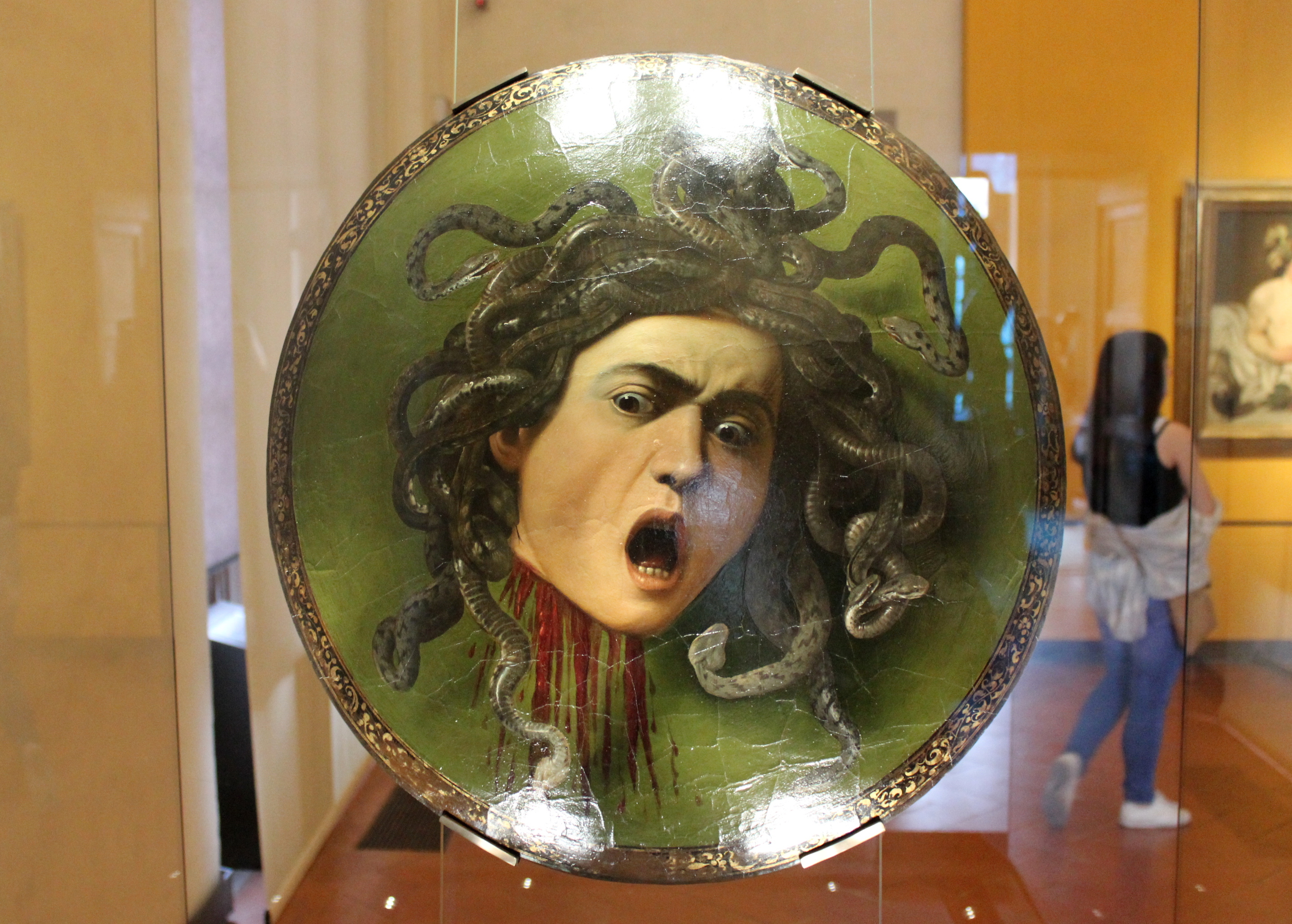
Thumbnail. Click to enlarge.
VIEW - UFFIZI GALLERY: https://www.uffizi.it/en/events/caravaggio-and-the-17th-century#gallery-5
FULL VIEW - VERY LARGE: https://upload.wikimedia.org/wikipedia/..._monte.jpg
FULL VIEW - VERY LARGE: https://upload.wikimedia.org/wikipedia/commons/1/15/Caravaggio_-_Medusa_-_Google_Art_Project.jpg
FULL VIEW - VERY LARGE: https://upload.wikimedia.org/wikipedia/...096%29.jpg
FULL VIEW - VERY LARGE: https://upload.wikimedia.org/wikipedia/...265%29.jpg
Rest on the Flight into Egypt - Michelangelo Caravaggio (1597) / Doria Pamphilj Gallery, Rome [Painting]
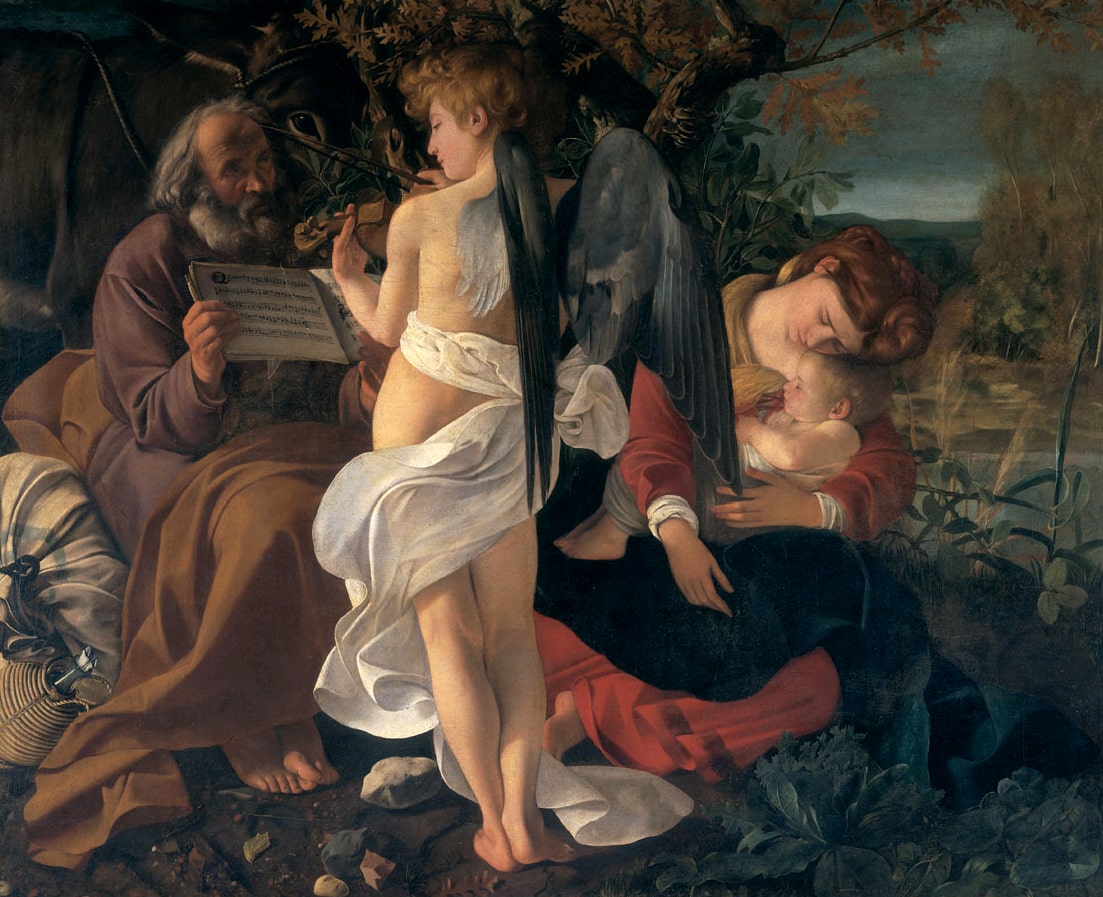
Thumbnail. Click to enlarge.
FULL VIEW - LARGE: https://upload.wikimedia.org/wikipedia/...597%29.jpg
FULL VIEW - EXTRA LARGE: https://upload.wikimedia.org/wikipedia/...597%29.jpg
FULL VIEW - ZOOM FUNCTION: https://www.arthistoryproject.com/artists/caravaggio/rest-on-the-flight-to-egypt/
Narcissus - Michelangelo Caravaggio (circa 1597 - 1599) / Galleria Nazionale d'Arte Antica, Rome, Italy [Painting]
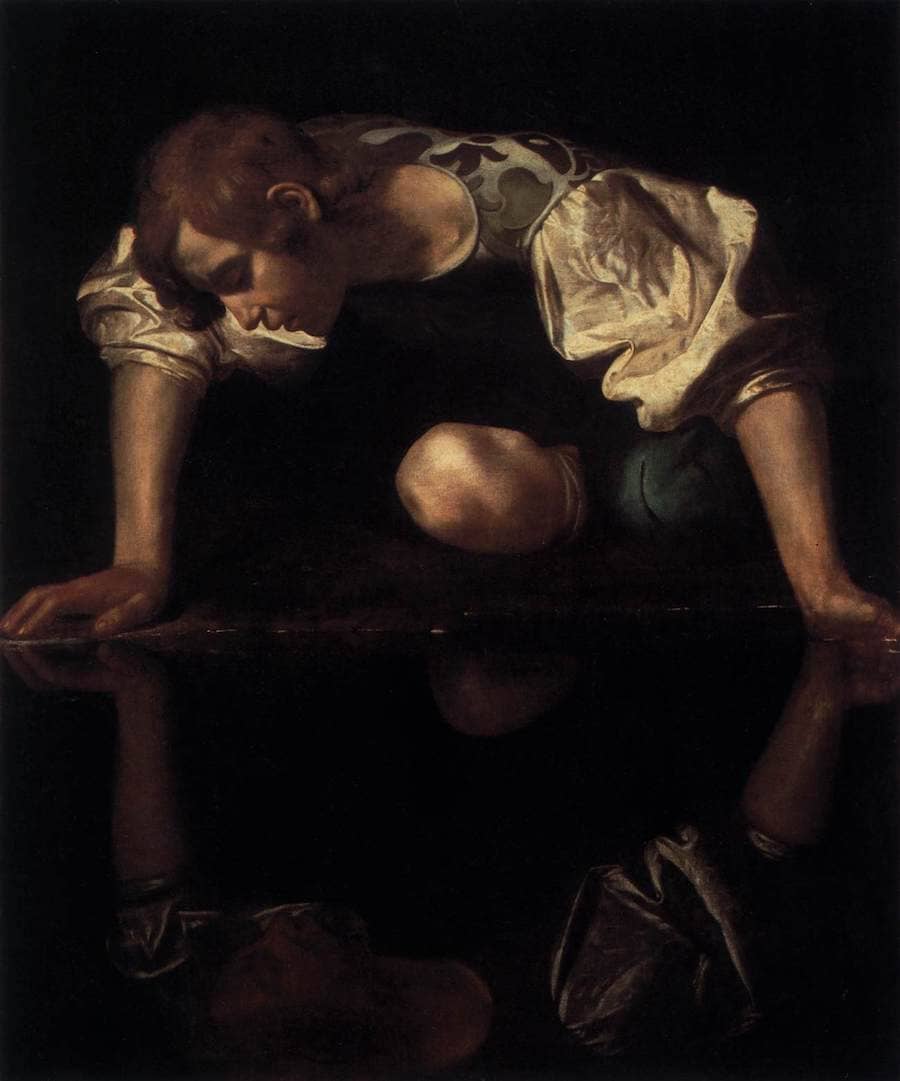
Thumbnail. Click to enlarge.
FULL VIEW - LARGE:
https://upload.wikimedia.org/wikipedia/...606%29.jpg
FULL VIEW - HIGHEST QUALITY AND LARGEST RESOLUTION - ZOOM FUNCTION: https://www.haltadefinizione.com/visualizzatore/opera/narciso-michelangelo-merisi-caravaggio
David and Goliath - Michelangelo Caravaggio (circa 1600, probably before 1599) / Museo del Prado, Madrid, Spain [Painting]

Thumbnail. Click to enlarge.
FULL VIEW - VERY LARGE: https://upload.wikimedia.org/wikipedia/...gio%29.jpg
FULL VIEW - HIGHEST QUALITY: https://www.museodelprado.es/en/the-col...0e3aaf0402
Judith Beheading Holofernes - Michelangelo Caravaggio (circa 1598 - 1599) / Galleria Nazionale d'Arte Antica, Palazzo Barberini, Rome, Italy [Painting]

Thumbnail. Click to enlarge.
FULL VIEW - LARGE: https://upload.wikimedia.org/wikipedia/commons/7/78/Judith_Beheading_Holofernes_-_Caravaggio.jpg
FULL VIEW - VERY LARGE: https://upload.wikimedia.org/wikipedia/...599%29.jpg
FULL VIEW - HIGHEST QUALITY AND LARGEST RESOLUTION - ZOOM FUNCTION: https://www.haltadefinizione.com/visual...caravaggio
David with the Head of Goliath - Michelangelo Caravaggio (circa 1600 - 1601) / Kunsthistorisches Museum, Vienna, Austria [Painting]

Thumbnail. Click to enlarge.
FULL VIEW - MEDIUM: https://www.reddit.com/media?url=https%...f14296d1b8
FULL VIEW - LARGE: https://upload.wikimedia.org/wikipedia/...Vienna.jpg
FULL VIEW - VERY LARGE: https://upload.wikimedia.org/wikipedia/...6-7%29.jpg
St. Matthew Cycle: The Calling of St. Matthew; The Inspiration of St. Matthew; The Martyrdom of St. Matthew - Michelangelo Caravaggio (1599 - 1600; 1602) / Contarelli Chapel, San Luigi dei Francesi, Rome, Italy [Painting]
FULL VIEW:
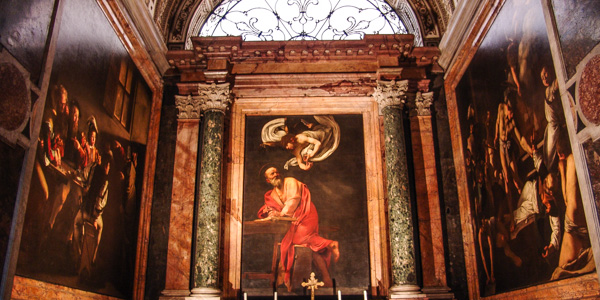
Thumbnail. Click to enlarge.
The Calling of St. Matthew:
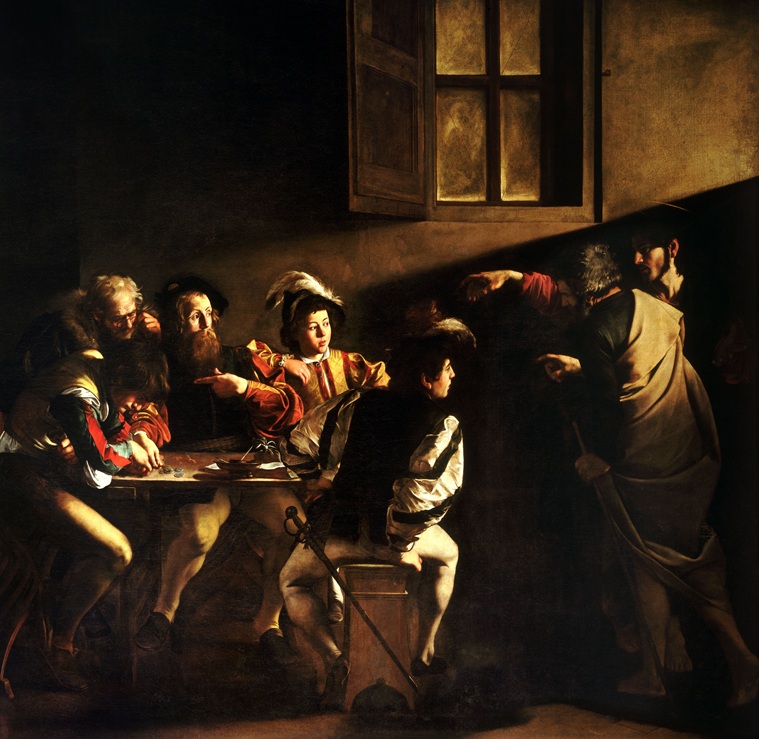
Thumbnail. Click to enlarge.
The Inspiration of St. Matthew:
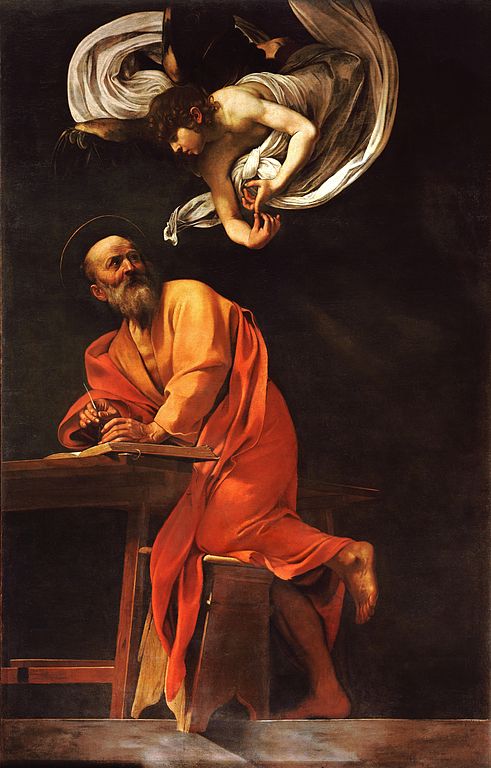
Thumbnail. Click to enlarge.
The Martyrdom of St. Matthew:

Thumbnail. Click to enlarge.
FULL VIEW - THE CALLING OF ST. MATTHEW - MEDIUM: https://www.caravaggio.org/assets/img/paintings/the-calling-of-saint-matthew.jpg
FULL VIEW - THE CALLING OF ST. MATTHEW - LARGE: https://upload.wikimedia.org/wikipedia/...600%29.jpg
FULL VIEW - THE CALLING OF ST. MATTHEW - VERY LARGE: https://upload.wikimedia.org/wikipedia/...600%29.jpg
FULL VIEW - THE CALLING OF ST. MATTHEW - HIGHEST QUALITY AND RESOLUTION - LARGEST IMAGE - ZOOM FUNCTION: https://www.haltadefinizione.com/en/image-bank/caravaggio-calling-of-saint-matthew/
FULL VIEW - THE INSPIRATION OF ST. MATTHEW - MEDIUM: https://www.caravaggio.org/assets/img/paintings/inspiration-of-saint-matthew.jpg
FULL VIEW - THE INSPIRATION OF ST. MATTHEW - VERY LARGE: https://upload.wikimedia.org/wikipedia/...oma%29.jpg
FULL VIEW - THE INSPIRATION OF ST. MATTHEW - EXTRA LARGE: https://upload.wikimedia.org/wikipedia/...602%29.jpg
FULL VIEW - THE INSPIRATION OF ST. MATTHEW - HIGHEST QUALITY AND RESOLUTION - LARGEST IMAGE - ZOOM FUNCTION: https://www.haltadefinizione.com/visual...caravaggio
FULL VIEW - THE MARTYRDOM OF ST. MATTHEW - MEDIUM: https://www.caravaggio.org/assets/img/paintings/martyrdom-of-saint-matthew.jpg
FULL VIEW - THE MARTYRDOM OF ST. MATTHEW - LARGE: https://admin.villamedici.it/wp-content...scaled.jpg
FULL VIEW - THE MARTYRDOM OF ST. MATTHEW - EXTRA LARGE: https://upload.wikimedia.org/wikipedia/...600%29.jpg
FULL VIEW - THE MARTYRDOM OF ST. MATTHEW - HIGHEST QUALITY AND RESOLUTION - LARGEST IMAGE - ZOOM FUNCTION: https://www.haltadefinizione.com/visual...caravaggio
FULL VIEW - ST MATTHEW CYCLE - EXCELLENT QUALITY (scroll down on page for full cycle): https://villamedici.it/en/programme/saint-matthew-and-the-contarelli-chapel/
PHOTO GALLERY - FULL CYCLE - VERY LARGE - HQ: https://www.flickr.com/photos/profzucker/24133871432/in/photostream/
VIDEO - CONTARELLI CHAPEL - ST. MATTHEW CYCLE - HQ VIEWS AND INFORMATIONAL: https://www.youtube.com/watch?v=x-R7v90U3Y4
IMAGE - SCALE: https://www.saturdaysinrome.com/wp-cont...rmat=1500w
The Crucifixion of Saint Peter and The Conversion of Saint Paul on the Road to Damascus - Michelangelo Caravaggio (1600 - 1601) / Cerasi Chapel, Santa Maria del Popolo, Rome, Italy [Painting]

Thumbnail. Click to enlarge.
The Crucifixion of Saint Peter:

Thumbnail. Click to enlarge.
The Conversion of Saint Paul on the Road to Damascus:

Thumbnail. Click to enlarge.
FULL VIEW - CERASI CHAPEL - IN SITU (Note: the two outer and facing paintings are Caravaggio while the central painting is Annibale Carraci's "Assumption of the Virgin"): https://upload.wikimedia.org/wikipedia/...Cerasi.jpg
FULL VIEW - THE CRUCIFIXION OF SAINT PETER - IN SITU - LARGE: https://upload.wikimedia.org/wikipedia/...e_2015.jpg
FULL VIEW - THE CRUCIFIXION OF SAINT PETER - VERY LARGE:
https://upload.wikimedia.org/wikipedia/...600%29.jpg
FULL VIEW - THE CRUCIFIXION OF SAINT PETER - HIGHEST QUALITY AND LARGEST RESOLUTION - ZOOM FUNCTION: https://www.haltadefinizione.com/visual...caravaggio
FULL VIEW - CONVERSION OF SAINT PAUL ON THE ROAD TO DAMASCUS - IN SITU - MEDIUM: https://www.flickr.com/photos/eriktorner/31818052724
FULL VIEW - CONVERSION OF SAINT PAUL ON THE ROAD TO DAMASCUS - LARGE: https://upload.wikimedia.org/wikipedia/...mascus.jpg
FULL VIEW - CONVERSION OF SAINT PAUL ON THE ROAD TO DAMASCUS - VERY LARGE: https://upload.wikimedia.org/wikipedia/...0-1%29.jpg
FULL VIEW - CONVERSION OF SAINT PAUL ON THE ROAD TO DAMASCUS - HIGHEST QUALITY AND LARGEST RESOLUTION - ZOOM FUNCTION: https://www.haltadefinizione.com/visual...caravaggio
PHOTO GALLERY - FULL VIEW - BOTH PAINTINGS: https://www.flickr.com/photos/profzucker/53066538152/in/photostream/
Supper at Emmaus [London Version] - Michelangelo Caravaggio (1601) / The National Gallery, London, England [Painting]

Thumbnail. Click to enlarge.
FULL VIEW - LARGE: https://www.flickr.com/photos/edcnyc/49864228598
FULL VIEW - VERY LARGE: https://upload.wikimedia.org/wikipedia/...London.jpg
FULL VIEW - VERY LARGE - ZOOM FUNCTION: https://artsandculture.google.com/asset...kXZw?hl=en
FULL VIEW - VERY LARGE - HIGHEST QUALITY - ZOOM FUNCTION: https://www.nationalgallery.org.uk/pain...-at-emmaus
IMAGE - SCALE: https://westernarthistorybysuzy.wordpre...&h=468
The Taking of Christ - Michelangelo Caravaggio (circa 1602) / National Gallery of Ireland, Dublin, Ireland [Painting]

Thumbnail. Click to enlarge.
FULL VIEW - LARGE: https://upload.wikimedia.org/wikipedia/...602%29.jpg
FULL VIEW - VERY LARGE: https://upload.wikimedia.org/wikipedia/...602%29.jpg
IMAGE - NATIONAL GALLERY OF IRELAND: http://doolanthinkshopblog.blogspot.com/2015/08/caravaggio-in-dublin.html
Sacrifice of Isaac - Michelangelo Caravaggio (1603) / Uffizi Gallery, Florence, Italy [Painting]

Thumbnail. Click to enlarge.
FULL VIEW - ZOOM FUNCTION: https://www.uffizi.it/en/artworks/sacrifice-of-isaac
FULL VIEW - VERY LARGE: https://upload.wikimedia.org/wikipedia/...izi%29.jpg
FULL VIEW - HIGHEST QUALITY AND LARGEST RESOLUTION - ZOOM FUNCTION: https://www.haltadefinizione.com/en/vie...caravaggio
The Entombment of Christ - Michelangelo Caravaggio (1603 - 1604) / Pinacoteca Vaticana, Vatican City, Rome, Italy [Painting]
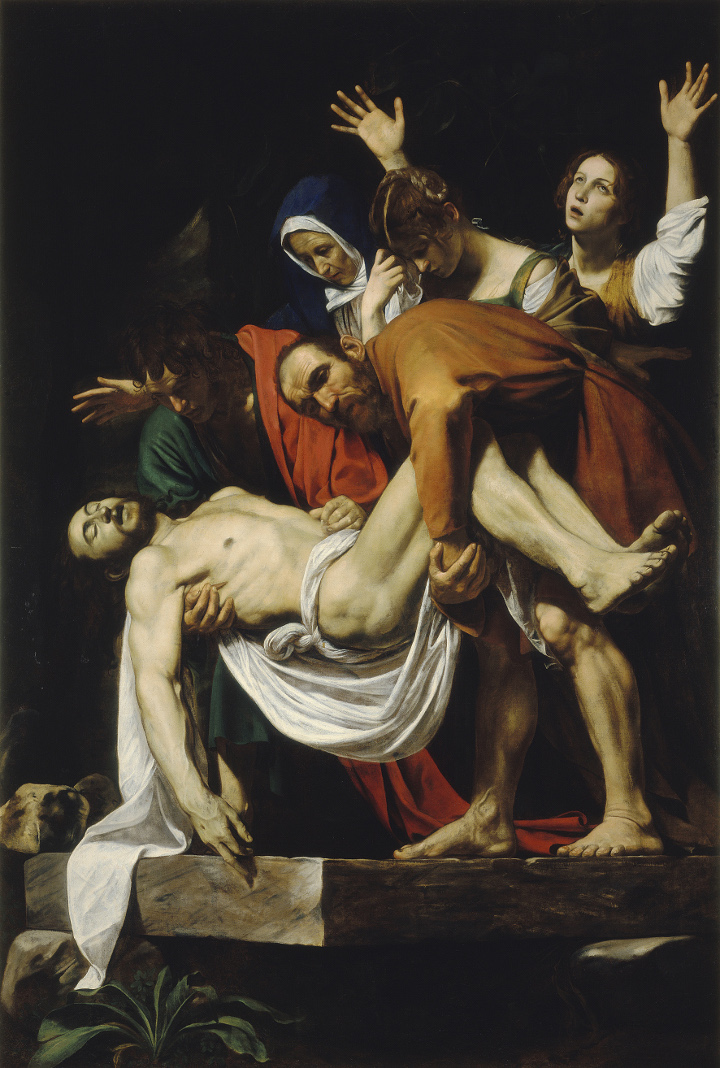
Thumbnail. Click to enlarge.
FULL VIEW - MEDIUM - HIGHEST QUALITY - ZOOM FUNCTION: https://www.museivaticani.va/content/mu...&pid=1
FULL VIEW - MEDIUM: https://upload.wikimedia.org/wikipedia/...2-3%29.jpg
FULL VIEW - LARGE: https://www.flickr.com/photos/andreaguagni72/53338822850/in/photostream/
FULL VIEW - EXTRA LARGE: https://upload.wikimedia.org/wikipedia/...2-3%29.jpg
PHOTO GALLERY - FULL AND DETAILED VIEWS: https://www.flickr.com/photos/profzucker/23935994233/in/photostream/
PHOTO GALLERY - FULL AND DETAILED VIEWS: https://www.flickr.com/photos/rjhuttondfw/20166684424/in/photostream/
PARTIAL VIEW - LARGE: https://www.flickr.com/photos/prof_richard/7845625906
IMAGE - SCALE: https://www.kornbluthphoto.com/images/VaticanMuseums_10.jpg
Saint Jerome Writing (circa 1602 - 1604 or 1605 - 1606) [Painting] / Galleria Borghese, Rome, Italy [Painting]

Thumbnail. Click to enlarge.
FULL VIEW - VERY LARGE: https://upload.wikimedia.org/wikipedia/...5-6%29.jpg
Saint Francis in Prayer (circa 1602 - 1604 or 1606 - 1607) / Galleria Nazionale d'Arte Antica, Rome [Painting]
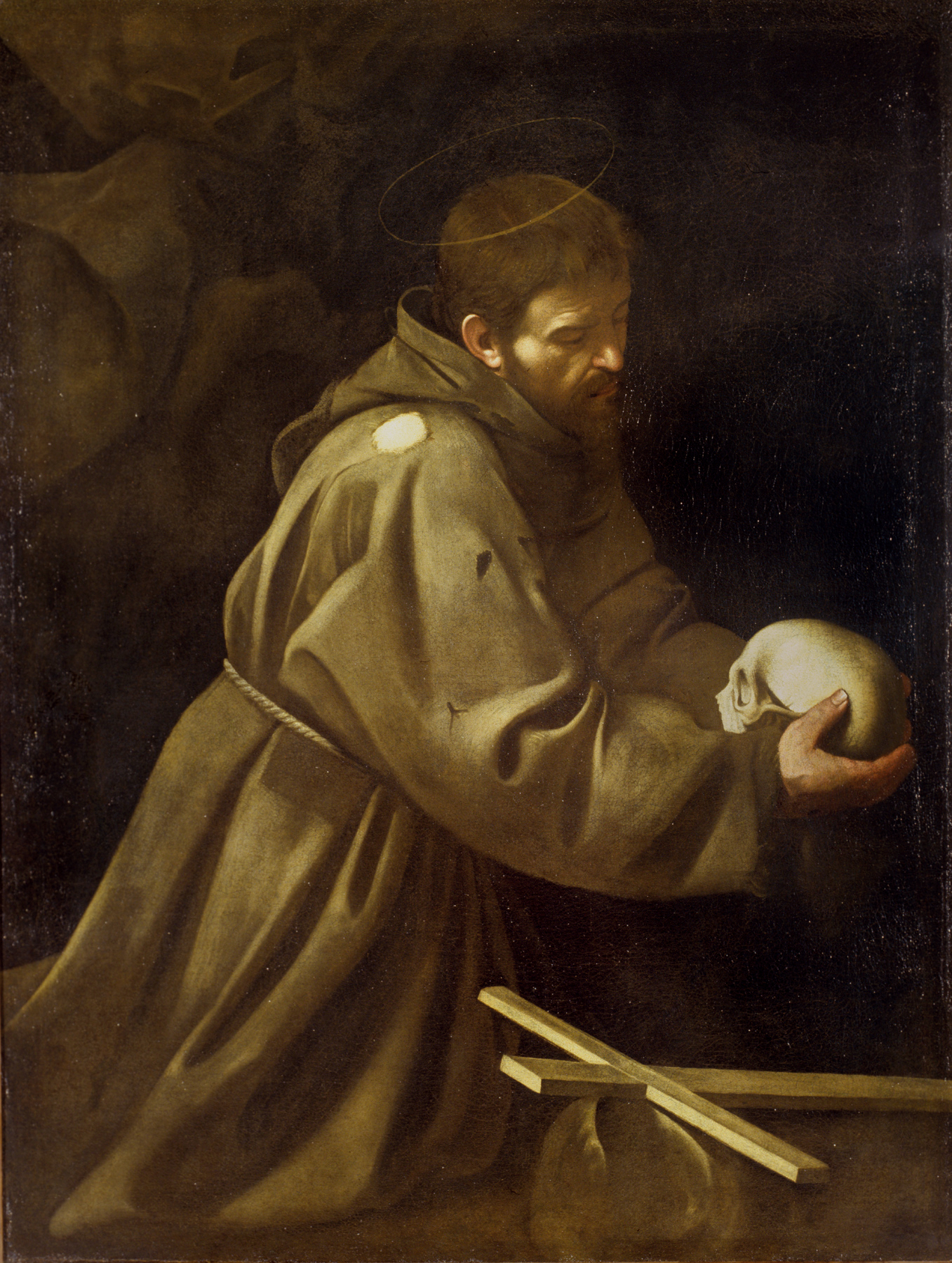
Thumbnail. Click to enlarge.
FULL VIEW - ZOOM FUNCTION: https://barberinicorsini.org/en/opera/saint-francis-in-meditation/
FULL VIEW - HIGHEST QUALITY AND LARGEST RESOLUTION - ZOOM FUNCTION: https://www.haltadefinizione.com/en/vie...caravaggio
Death of the Virgin - Michelangelo Caravaggio (1606) / Louvre, Paris, France [Painting]

Thumbnail. Click to enlarge.
FULL VIEW AND DETAILED VIEWS - SMALL/MEDIUM - VERY HQ: https://collections.louvre.fr/en/ark:/53355/cl010062304
FULL VIEW - VERY HQ - MEDIUM: https://narratives.digital/sites/default/files/2022-04/LESSING_ART_10310483213_0.jpg
FULL VIEW - LARGE: https://upload.wikimedia.org/wikipedia/...606%29.jpg
FULL VIEW - LARGE: https://www.flickr.com/photos/lluisribes/15997436736/in/photostream/
FULL VIEW - VERY LARGE: https://upload.wikimedia.org/wikipedia/...606%29.jpg
IMAGE - SCALE: https://www.flickr.com/photos/profzucker/5894170557/in/photostream/
Madonna and Child with St. Anne - Michelangelo Caravaggio (1605 - 1606) / Galleria Borghese, Rome, Italy [Painting]

Thumbnail. Click to enlarge.
FULL VIEW - EXTRA LARGE: https://upload.wikimedia.org/wikipedia/...5-6%29.jpg
FULL VIEW - HIGHEST QUALITY AND LARGEST RESOLUTION - ZOOM FUNCTION: https://www.haltadefinizione.com/visual...caravaggio
The Seven Works of Mercy - Michelangelo Caravaggio (1607) / Pio Monte della Misericordia, Naples [Painting]

FULL VIEW - LARGE: https://upload.wikimedia.org/wikipedia/...roject.jpg
FULL VIEW - EXTRA LARGE: https://upload.wikimedia.org/wikipedia/...roject.jpg
FULL VIEW - EXTRA LARGE: https://upload.wikimedia.org/wikipedia/...607%29.jpg
FULL VIEW - INFORMATIONAL: https://artsandculture.google.com/story...R6LA?hl=en
Madonna of the Rosary - Michelangelo Caravaggio (1607) / Kunsthistorisches Museum, Vienna, Austria [Painting]

Thumbnail. Click to enlarge.
FULL VIEW - LARGE - ZOOM FUNCTION: https://www.arthistoryproject.com/artists/caravaggio/madonna-of-the-rosary/
FULL VIEW - VERY LARGE: https://upload.wikimedia.org/wikipedia/...roject.jpg
Salome with the Head of John the Baptist - Michelangelo Caravaggio (circa 1607 or 1609) / Royal Collections Gallery, Madrid, Spain [Painting]

Thumbnail. Click to enlarge.
FULL VIEW - VERY HQ - VERY LARGE - ZOOM FUNCTION: https://www.patrimonionacional.es/en/colecciones-reales/salome-head-saint-john-baptist
The Beheading of Saint John the Baptist (1608) / St. John's Co-Cathedral, Valletta, Malta [Painting]

Thumbnail. Click to enlarge.
FULL VIEW - IN SITU - SMALL: https://www.stjohnscocathedral.com/wp-content/uploads/2021/05/The_Oratory01.jpg
PHOTO GALLERY: https://www.stjohnscocathedral.com/the-co-cathedral/caravaggio/
VIDEO - ST JOHN'S CO CATHEDRAL TOUR (Beheading of Saint John the Baptist @ approx 4:45): https://www.youtube.com/watch?v=siD5WLqgdsk&list=RDsiD5WLqgdsk&start_radio=1
The Burial of Saint Lucy - Michelangelo Caravaggio (1608) / Chiesa di Santa Lucia al Sepolcro, Syracuse, Sicily, Italy [Painting]

Thumbnail. Click to enlarge.
FULL VIEW - MEDIUM/LARGE: https://www.caravaggio.org/assets/img/paintings/burial-of-saint-lucy.jpg
PHOTO GALLERY - VARIOUS VIEWS - RESTORATION PROCESS: https://factumfoundation.org/our-projects/digitisation/caravaggios-the-burial-of-st-lucy/
David with the Head of Goliath - Michelangelo Caravaggio (circa 1606 - 1607 or 1609 - 1610) / Galleria Borghese, Rome, Italy [Painting]

Thumbnail. Click to enlarge.
FULL VIEW - VERY LARGE: https://upload.wikimedia.org/wikipedia/...610%29.jpg
FULL VIEW - HIGHEST QUALITY - ZOOM FUNCTION: https://www.collezionegalleriaborghese.it/en/opere/david-with-the-head-of-goliath[/b]
Salome with the Head of John the Baptist - Michelangelo Caravaggio (circa 1607 or 1609 - 1610) / National Gallery, London, England [Painting]
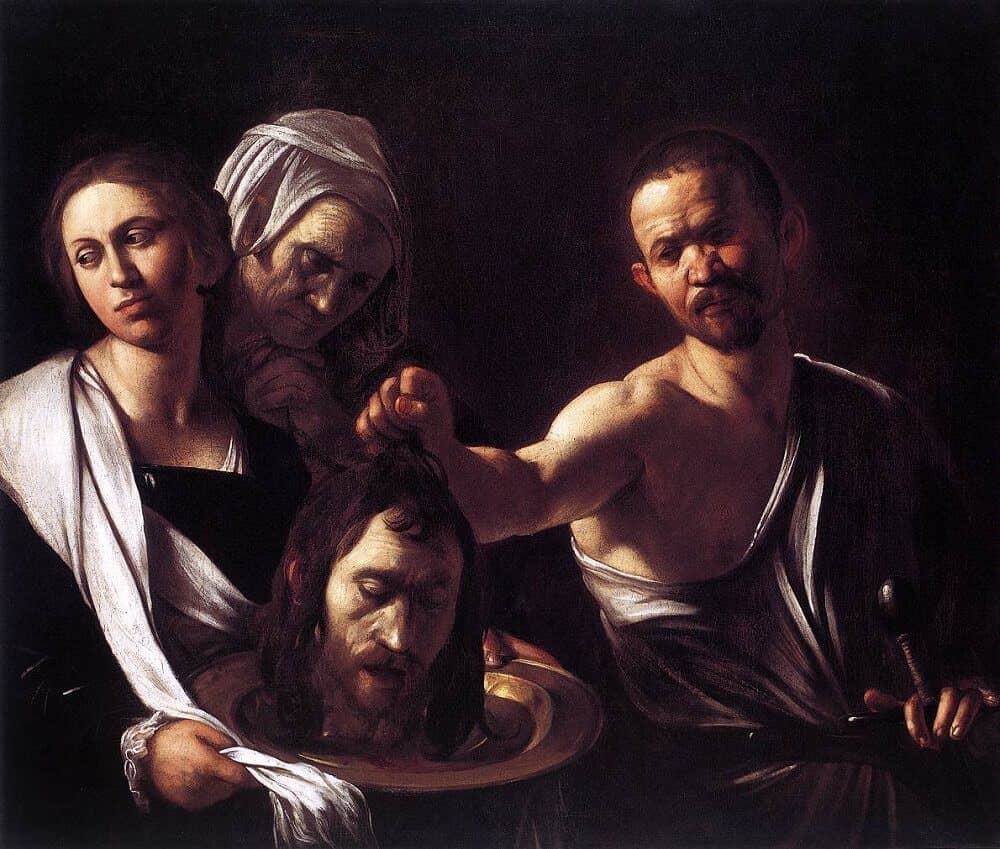
Thumbnail. Click to enlarge.
FULL VIEW - VERY LARGE: https://upload.wikimedia.org/wikipedia/...aptist.jpg
FULL VIEW - VERY HQ - VERY LARGE - ZOOM FUNCTION: https://www.nationalgallery.org.uk/pain...he-baptist
_________________
Best Classical
Best Films
Best Paintings
Last edited by AfterHours on 07/23/2025 15:43; edited 35 times in total
|
|
|
|
AfterHours
Gender: Male
Location: The Zone
- #110
- Posted: 05/26/2022 20:51
- Post subject:
|
Raphael Sanzio (1483 - 1520)
Best Works:
7.0/10: The Marriage of the Virgin (1504)
7.7/10: Stanza della Segnatura (1511)
7.1/10: Sistine Madonna (circa 1514)
7.5/10: Transfiguration (1520)
The Marriage of the Virgin - Raphael Sanzio (1504)
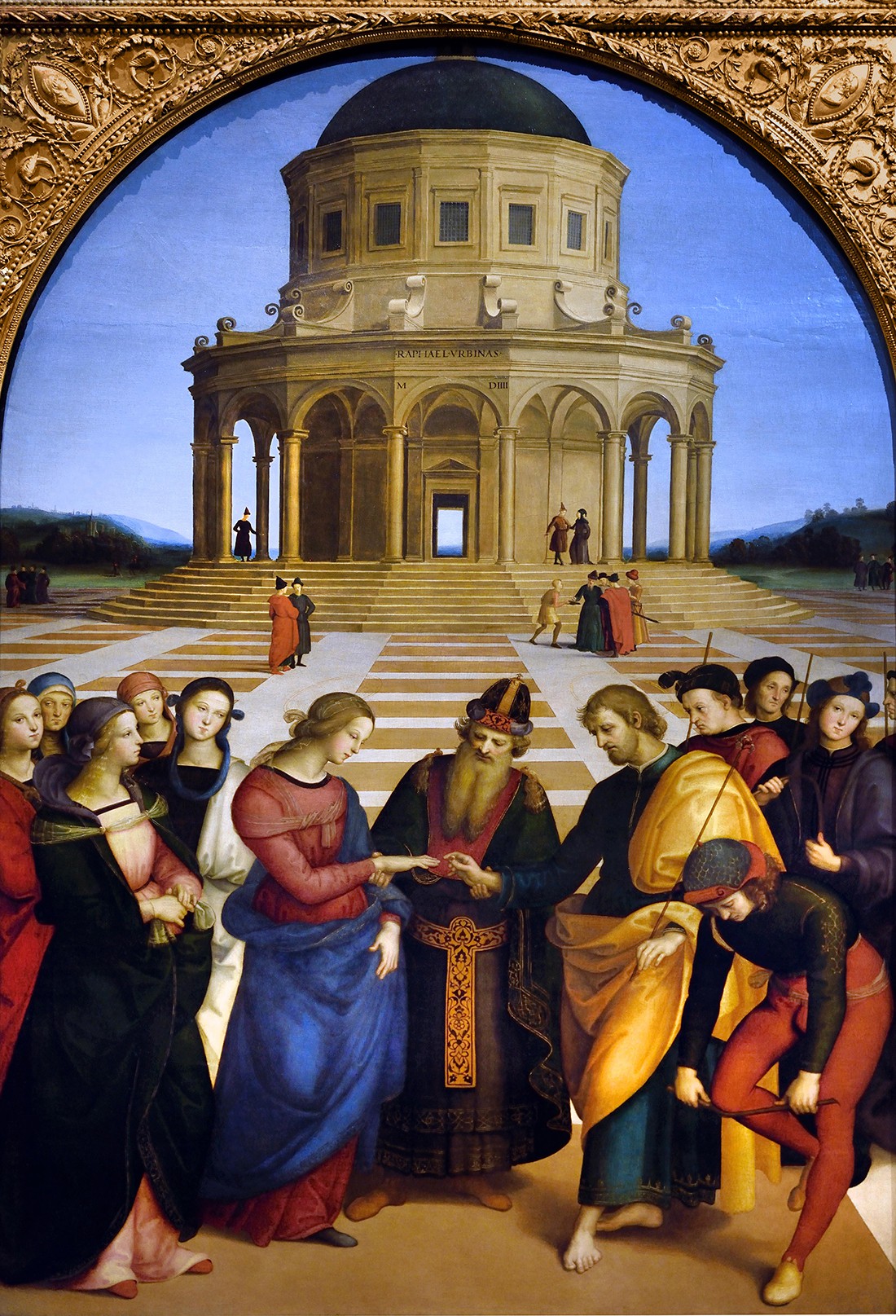
Thumbnail. Click to enlarge.
FULL VIEW - VERY LARGE: https://upload.wikimedia.org/wikipedia/...of_Art.jpg
FULL VIEW - VERY LARGE - HIGHEST QUALITY - ZOOM FUNCTION: https://www.haltadefinizione.com/en/viewer/work/marriage-of-the-virgin-raphael-raffaello-sanzio
MILAN, ITALY: https://c8.alamy.com/comp/T00HXG/milan-...T00HXG.jpg
Stanza della Segnatura - Raphael Sanzio (1511)
The Cardinal Virtues and Disputation of the Holy Sacrament:

Thumbnail. Click to enlarge.
The Parnassus and The School of Athens:

Thumbnail. Click to enlarge.
Ceiling:

Thumbnail. Click to enlarge.
FULL VIEW - Disputation of the Holy Sacrament: https://upload.wikimedia.org/wikipedia/commons/6/61/Disputa_del_Sacramento_%28Rafael%29.jpg
FULL VIEW - Disputation of the Holy Sacrament: https://www.flickr.com/photos/justaslice/49814260661/in/photostream/
DETAIL - Disputation of the Holy Sacrament: https://www.flickr.com/photos/justaslice/49829449953/in/photostream/
DETAIL - Disputation of the Holy Sacrament: https://www.flickr.com/photos/justaslice/49822282092/in/photostream/
DETAIL - Disputation of the Holy Sacrament: https://www.flickr.com/photos/justaslice/49826495367/in/photostream/
DETAIL - Disputation of the Holy Sacrament: https://www.flickr.com/photos/justaslice/49825645303/in/photostream/
DETAIL - Disputation of the Holy Sacrament: https://www.flickr.com/photos/justaslice/49826176681/in/photostream/
DETAIL - Disputation of the Holy Sacrament: https://www.flickr.com/photos/justaslice/49821622858/in/photostream/
DETAIL - Disputation of the Holy Sacrament: https://www.flickr.com/photos/justaslice/49822161351/in/photostream/
DETAIL - Disputation of the Holy Sacrament: https://www.flickr.com/photos/justaslice/49821877613/in/photostream/
DETAIL - Disputation of the Holy Sacrament: https://www.flickr.com/photos/justaslice/49821430803/in/photostream/
DETAIL - Disputation of the Holy Sacrament: https://www.flickr.com/photos/justaslice/49821970551/in/photostream/
FULL VIEW - The Parnassus: https://upload.wikimedia.org/wikipedia/...511%29.jpg
FULL VIEW - The Parnassus: https://www.flickr.com/photos/justaslice/49805756996/
DETAIL - The Parnassus: https://www.flickr.com/photos/justaslice/49807235411/in/photostream/
DETAIL - The Parnassus: https://www.flickr.com/photos/justaslice/49806679298/in/photostream/
DETAIL - The Parnassus: https://www.flickr.com/photos/justaslice/49807234171/in/photostream/
DETAIL - The Parnassus & Ceiling: https://www.flickr.com/photos/justaslice/49806068342/in/photostream/
FULL VIEW - The School of Athens: https://upload.wikimedia.org/wikipedia/...Urbino.jpg
FULL VIEW - The School of Athens: https://www.flickr.com/photos/justaslice/49785428191/in/photostream/
DETAIL - The School of Athens: https://www.flickr.com/photos/justaslice/49802464257/in/photostream/
DETAIL - The School of Athens: https://www.flickr.com/photos/justaslice/49785426816/in/photostream/
DETAIL - The School of Athens: https://www.flickr.com/photos/justaslice/49785748927/
DETAIL - The School of Athens: https://www.flickr.com/photos/justaslice/49785748052/in/photostream/
DETAIL - The School of Athens: https://www.flickr.com/photos/justaslice/49785425646/in/photostream/
DETAIL - The School of Athens: https://www.flickr.com/photos/justaslice/49785747527/in/photostream/
FULL VIEW - The Cardinal Virtues: https://upload.wikimedia.org/wikipedia/commons/2/2f/Virt%C3%B9_e_due_scene_02.jpg
FULL VIEW - The Cardinal Virtues: https://www.flickr.com/photos/justaslice/49846714017/in/photostream/
DETAIL - The Cardinal Virtues: https://www.flickr.com/photos/justaslice/49845874328/in/photostream/
DETAIL - The Cardinal Virtues & Ceiling: https://www.flickr.com/photos/justaslice/49846926317/in/photostream/
FULL VIEW - Stanza della Segnatura Ceiling: http://www.reidsitaly.com/site/assets/f...eiling.jpg
DETAIL - Stanza della Segnatura Ceiling: https://www.flickr.com/photos/justaslice/49842136997/in/photostream/
DETAIL - Stanza della Segnatura Ceiling: https://www.flickr.com/photos/justaslice/49814252146/in/photostream/
DETAIL - Stanza della Segnatura Ceiling: https://www.flickr.com/photos/justaslice/49801525988/in/photostream/
DETAIL - Stanza della Segnatura Ceiling: https://www.flickr.com/photos/justaslice/49806067927/
IMAGE FOR SCALE - Stanza della Segnatura - Vatican City, Italy: https://previews.123rf.com/images/vvoen...-.jpg?fj=1
IMAGE FOR SCALE - Stanza della Segnatura - Vatican City, Italy: https://st2.depositphotos.com/4414201/8...atican.jpg
IMAGE FOR SCALE - Stanza della Segnatura - Vatican City, Italy: https://www.alamy.com/stock-photo-rome-...d0%26pl%3d
VIRTUAL TOUR: http://www.museivaticani.va/content/museivaticani/en/collezioni/musei/stanze-di-raffaello.html
VIDEO - RAPHAEL ROOMS (Stanze della Segnatura @ approx. 1:10 - 1:49): http://www.museivaticani.va/content/mus...video.html
Sistine Madonna - Raphael Sanzio (circa 1514)

Thumbnail. Click to enlarge.
FULL VIEW - VERY LARGE: https://upload.wikimedia.org/wikipedia/..._cm%29.jpg
FULL VIEW - VERY LARGE - ZOOM FUNCTION: https://artsandculture.google.com/asset/the-sistine-madonna/CgEiMJRg7ZS6DA?hl=en
IMAGE FOR SCALE - Gemäldegalerie Alte Meister, Dresden, Germany: https://www.flickr.com/photos/15434282@N00/2897875290/
Transfiguration - Raphael Sanzio (1520)
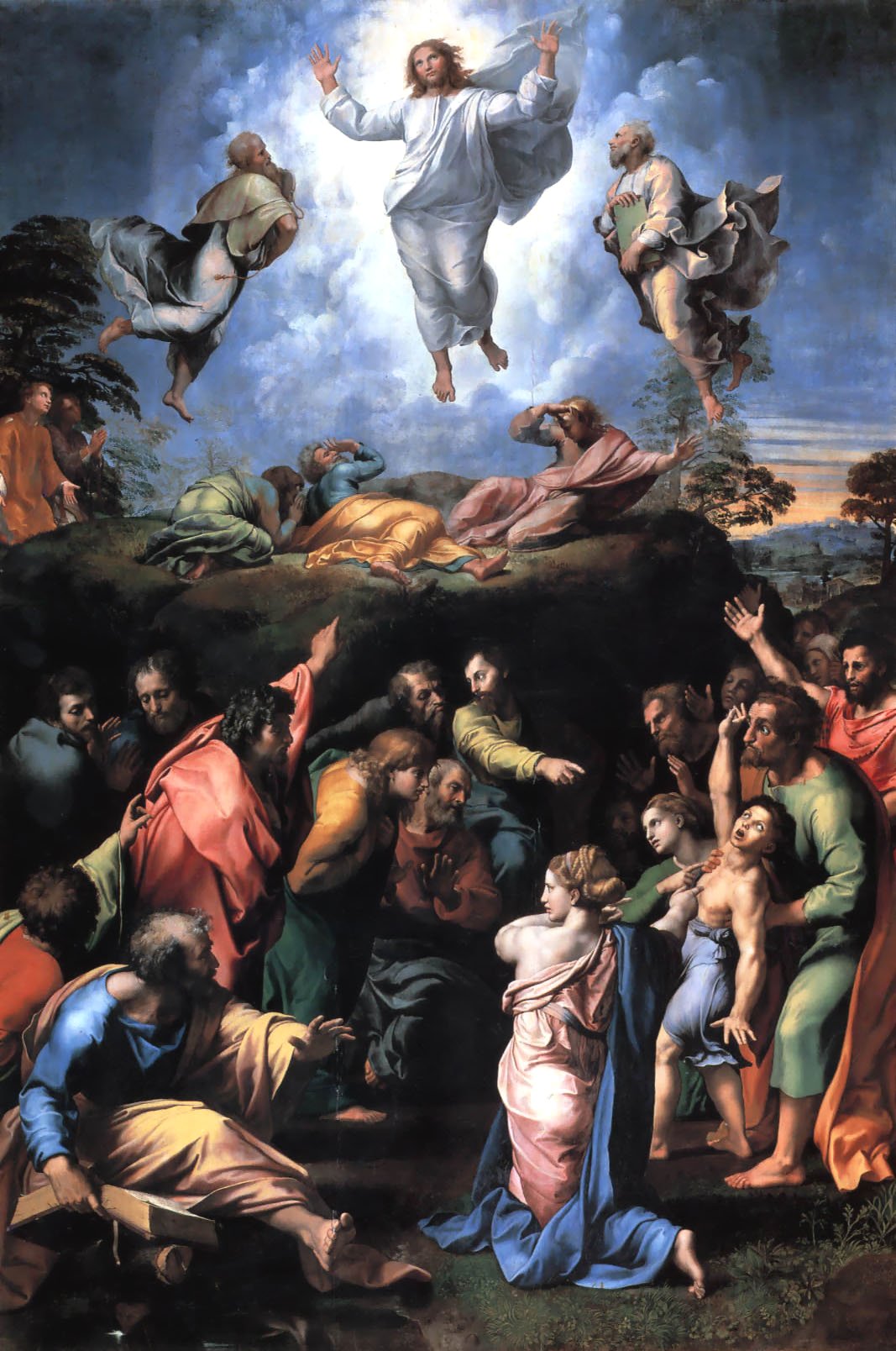
Thumbnail. Click to enlarge.
FULL VIEW - VERY LARGE: https://gallerix.ru/album/Rafael/pic/glrx-971875000
DETAIL - UPPER HALF: https://gallerix.ru/album/Rafael/pic/glrx-4515
FULL VIEW - PINACOTECA VATICANA, VATICAN CITY, ROME: https://www.flickr.com/photos/huang_cha.../lightbox/
https://www.flickr.com/photos/justaslice/49935269082/
https://www.flickr.com/photos/28433765@N07/6908425429/
DETAIL: https://www.flickr.com/photos/justaslice/50062206656/
DETAIL: https://www.flickr.com/photos/94185526@N04/36681027250/
DETAIL: https://www.flickr.com/photos/prof_richard/48758901641/
DETAIL: https://www.flickr.com/photos/brad-darren/33332900195/
DETAIL: https://www.flickr.com/photos/hen-magonza/5105202502/
Misc notes for future analysis...
Jesus is descending from Mount Tabor to cure an epileptic boy that the apostles were unable to cure. The text of Matthew is the following:
“Now after six days Jesus took Peter, James and John his brother, brought them up on a high mountain by themselves, 2 and was transfigured before them. His face shown like the sun, and His clothes became as white as the light. 3 And, behold, Moses and Elijah appeared to them, talking with Him. 4 Then Peter answered, and said to Jesus, ‘Lord, it is good for us to be here: if You wish, let us make here three tabernacles; one for You, one for Moses, and one for Elijah.’ 5 While he was still speaking, behold, a bright cloud overshadowed them; and suddenly a voice came out of the cloud, saying, ‘This is My beloved Son, in whom I am well pleased. Hear Him!’ 6 And when the disciples heard it, they fell on their faces, and were greatly afraid. 7 But Jesus came and touched them, and said, ‘Arise, and do not be afraid.’ 8 And when they had lifted up their eyes, they saw no one but Jesus only. 9 Now as they came down from the mountain, Jesus commanded them, saying, ‘Tell the vision to no one, until the Son of man is risen from the dead.’ 10 And his disciples asked Him, saying, ‘Why then do the scribes say that Elijah must come first?’ 11 Then Jesus answered and said to them, ‘Elijah truly is coming first, and will restore all things. 12 But I say to you that Elijah has come already, and they did not know him but did to him whatever they wished. Likewise the Son of man is also about to suffer at their hands.’ 13 Then the disciples understood that he spoke to them of John the Baptist. 14 And when they had come to the multitude, a man came to Him, kneeling down to Him and saying, 15 ‘Lord, have mercy on my son for he is an epileptic and suffers severely; for he often falls into the fire and often into the water. 16 So I brought him to Your disciples, but they could not cure him.’ 17 Then Jesus answered and said, ‘O faithless and perverse generation, how long shall I be with you? How long shall I bear with you? Bring him here to me.’ 18 And Jesus rebuked the demon, and he came out of him; and the child was cured from that very hour. 19 Then the disciples came to Jesus privately and said, ‘Why could we not cast him out?’ 20 So Jesus said to them, ‘Because of your unbelief; for assuredly I say to you, ‘If you have faith as a mustard seed, ye will say to this mountain, ‘Move from here to there,’ and it will move; and nothing will be impossible for you. However, this kind does not go out except by prayer and fasting. (Matthew 17: 1-21)
In his Gospel, Mark offers a few more instructive details about the state of the epileptic boy and how it is possible to do the impossible for curing him.
“16 And He asked the scribes, ‘What are you discussing with them?’ 17 Then one from the multitude answered and said, ‘Teacher, I brought you my son, who has a mute spirit. 18 And wherever he seizes him, he throws him down; he foams at the mouth, gnashes his teeth, and becomes rigid. So I spoke to Your disciples, that they should cast him out, but they could not.’ 19 He answered him and said, ‘Oh faithless generation, how long shall I be with you? How long shall I bear with you? Bring him to me.’ 20 Then they brought him to Him and when he saw Him, immediately the spirit convulsed him, and he fell on the ground and wallowed, foaming at the mouth. 21 So He asked his father, ‘How long has this been happening to him?’ And he said, ‘From Childhood. 22 And often he has thrown him both into the fire and into the water to destroy him. But if You can do anything, have compassion on us and help us.’ 23 And Jesus said to him, ‘If you can believe, all things are possible to him who believes.” (Mark, 9:16-23.)
-Features two scenes that aren't happening at the same time but are depicted as if they were, in a collision of space-time
-St Peter and St John are in both the upper and lower half of the work. In the top, their eyes are closed upon the event of Jesus' transfiguration, which is too much for them to see. In the lower half they are trying to help resolve the nature of the epileptic boy's affliction and how to cure him, amidst discussion, argument, confusion and disarray.
-The bottom is filled with shadow and light refraction, and a much more palpable physicality, as this scene is a metaphor for physical sense-perception, contrary to the top, which is blinded a bit by a visionary light and can be considered beyond physical sense-perception (of John and Peter)
-Since in the above section of the Transfiguration, John and Peter cannot see the principle with their physical eyes, the consequence must be that they can only see with their minds through the shadows of sense-perception as developed in the event of the section below. That is the conceptual unity of the painting and the dense point of transformation to be made here.
-The question that Raphael poses for the spectator to resolve is: could the mental event above represent the result of the failure of the (other) apostles to understand the significance of the perceived event occurring below? Is that what Peter and John have understood and that others have failed to grasp?
-Leonardo wrote: “Each natural phenomenon is generated by the shortest pathway.”
-As in the case of Leonardo, the secret lay in the mastering of the shadows relative to that biblical account.
-The transformation of the physical state of the epileptic boy is also the cure for the psychological condition of the apostles’ fears and states of disbelief with respect to the
powers of their own minds.
-Raphael plays on a tradition equating epilepsy with the aquatic moon (luna, from whence lunatic). This causal link is played on by the watery reflection of the moon in the lower left corner of the painting; the boy is literally moonstruck. In Raphael's time, epilepsy was often equated with the moon (morbus lunaticus), possession by demons (morbus daemonicus), and also, paradoxically, the sacred (morbus sacer). In the 16th century, it was not uncommon for sufferers of epilepsy to be burned at the stake, such was the fear evoked by the condition.
-In the bottom half, Raphael has John and Peter looking inside the domain of a tragic world gone mad. While all of the other apostles are distraught to various degrees, Peter and John are the only two figures who show understanding and compassion for the boy’s deranged state. The impression that Raphael gave to all of the other faces and
gestures is that no one else is capable of solving the crisis of the young boy, because no one is making an effort of understanding how to transfigure madness into sanity; that is, how to elevate someone to a higher moral state of spirituality. Peter and John’s facial shadowy expressions in the lower half tell a different story. They show how John and Peter are attempting to solve the problem. Both apostles express love and compassion for the other, however strangely he may act. The shadows of the tense and attentive minds of John and Peter: a process that describes a mental state of alertness and concern for a fellow human being who is going through existential distress (in addition to their own faces, the shadow play, figurative emphasis, stress and calamity of action of the bottom half, is a personification for their states and existential distress, the other apostles and characters revolving and winding around them in an attempt towards a solution; overall, the lower scene is a physical embodiment of this "unraveling" and progression).
-Peter and John were making explicit how to bring a solution to the crisis of a sick society. The extraordinary shadows of their figures show that they perceive how to
solve the crisis, that they are attempting to calm the turbulent scene around them, and that they are endeavoring to save the boy from his state of delusion. John seems to be saying to Peter: “We must help this poor child out of his convulsion!” And Peter seems to reply: “Yes, but you must be very calm and be very clinical about it.”
-The idea is that of an image of axiomatic change that is too luminous and too bright to be seen with physical eyes, but which only the eyes of the mind can see the “universal harmony” of. In contrast with the blinding light of Christ, the epileptic boy calls attention to the same image by inversion, but this time, formed with dark rays, as if generated through the blackness of the lower half. In a way, one is the negative image of the other. In a similar manner as Leonardo accomplished, the two levels of his fresco could be resolved by turning the tragic existential moment into a sublime moment.
-Peter is directly below Jesus in the bottom half, meeting its center with his movement. John is just to the slight left of him, their faces adjoined in gesture and expression. They are each above themselves in the top half, collapsed to the ground. The epileptic boy, convulsing, eyes spiraling and to the back of his head, arms spread and outstretched, is a "negative" or "inverse" version of Jesus, who is transfigured above, floating, eyes falling back in ecstatic poise and arms outstretched in triangular pose, Elijah and Moses to the sides of him. This deftly alluded parallel between the boy and Jesus is, itself, a metaphor for the transfiguration (change of form or appearance) and to express the true source and connection from which he is healed. The violent distress and calamity the boy is going through among the riled crowd, versus the calm pose of Jesus, with his arms outstretched that gently suggest his future crucifixion. The scenes combined is a fusion of allusion that symbolizes the emotional, painful and ecstatic trajectory of Jesus' arrest and crucifixion and, as well in the upper half, eventual resurrection.
-Prefiguration of both Mannerism, as evidenced by the stylised, contorted poses of the figures at the bottom of the picture; and of Baroque painting, as evidenced by the dramatic tension imbued within those figures, and the strong use of chiaroscuro throughout.
-Depicting a dichotomy: the redemptive power of Christ, as symbolized by the purity and symmetry of the top half of the painting; contrasted with the flaws of Man, as symbolized by the dark, chaotic scenes in the bottom half of the painting.
-The upper part of the painting is made up of intersection triangles, forming a pyramid with Christ at the highest point: https://upload.wikimedia.org/wikipedia/commons/3/39/Proportion_and_Design_of_Part_of_Rapha el%27s_Tranfiguration.jpg
-NOTE: add specified pics of John and Peter or a character map, so they are easy for the viewer to spot. Upper half: they are on the ground covering their faces beneath the floating Jesus. Lower half: they are in the left-middle (studies of Peter and John): https://upload.wikimedia.org/wikipedia/commons/1/1e/St_Peter_and_St_John_for_the_Transfigu ration.jpg
_________________
Best Classical
Best Films
Best Paintings
Last edited by AfterHours on 07/23/2025 22:36; edited 7 times in total
|
|
|
|
|
|
You cannot post new topics in this forum
You cannot reply to topics in this forum
You cannot edit your posts in this forum
You cannot delete your posts in this forum
You cannot vote in polls in this forum
|
|
|
